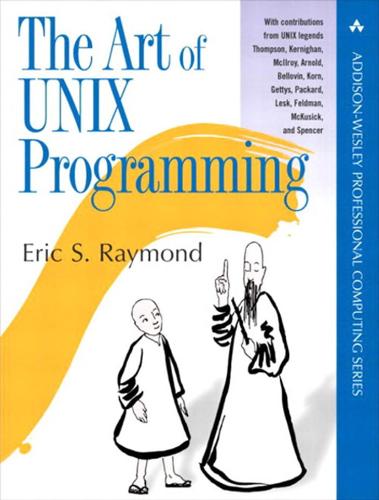
The Art of UNIX Programming
by
Eric S. Raymond
Published 22 Sep 2003
Languages rewritten to incorporate lots of feedback. Transparency, Modularity, Multiprogramming, Configuration, Interfaces, Documentation, and Open Source chapters released. Shipped to Mark Taub at AW. Revision 0.0 1999 esr Public HTML draft, first four chapters only. * * * Dedication To Ken Thompson and Dennis Ritchie, because you inspired me. Preface Preface Unix is not so much an operating system as an oral history. -- Neal Stephenson There is a vast difference between knowledge and expertise. Knowledge lets you deduce the right thing to do; expertise makes the right thing a reflex, hardly requiring conscious thought at all.
…
No claim that these are the best possible ones is implied, merely that I find them sufficiently familiar to be useful for multiple expository purposes. Author's Acknowledgements The guest contributors (Ken Arnold, Steven M. Bellovin, Stuart Feldman, Jim Gettys, Steve Johnson, Brian Kernighan, David Korn, Mike Lesk, Doug McIlroy, Marshall Kirk McKusick, Keith Packard, Henry Spencer, and Ken Thompson) added a great deal of value to this book. Doug McIlroy, in particular, went far beyond the call of duty in the thoroughness of his critique and the depth of his contributions, displaying the same care and dedication to excellence which he brought to managing the original Unix research group thirty years ago.
…
And yet Unix, in its present-day avatars as Linux and BSD and Solaris and MacOS X and half a dozen other variants, seems stronger than ever today. Robert Metcalf [the inventor of Ethernet] says that if something comes along to replace Ethernet, it will be called “Ethernet”, so therefore Ethernet will never die.[4] Unix has already undergone several such transformations. -- Ken Thompson At least one of Unix's central technologies — the C language — has been widely naturalized elsewhere. Indeed it is now hard to imagine doing software engineering without C as a ubiquitous common language of systems programming. Unix also introduced both the now-ubiquitous tree-shaped file namespace with directory nodes and the pipeline for connecting programs.
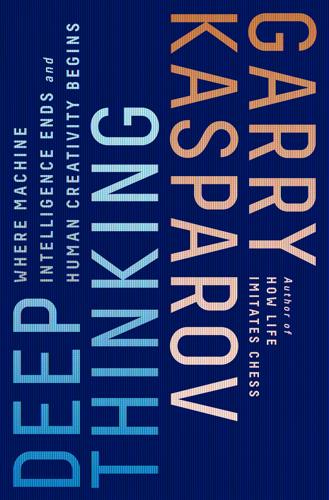
Deep Thinking: Where Machine Intelligence Ends and Human Creativity Begins
by
Garry Kasparov
Published 1 May 2017
The first programs using this technique, running on some of the fastest computers of the day, reached a respectable playing strength. By the late 1970s, programs running on early personal computers like the TRS-80 could defeat most amateurs. The next leap came out of the famous Bell Laboratories in New Jersey, which churned out patents and Nobel Prize winners for decades. Ken Thompson built a special-purpose chess machine with hundreds of chips. His machine, Belle, was able to search about 180,000 positions per second while the general-purpose supercomputers of the day could only manage 5,000. Seeing up to nine half-moves (ply) ahead during a game, Belle could play at the level of a human master and far better than any other chess machine.
…
At least the Carnegie Mellon group’s daring 1957 promise of 1967 was in some ways avenged since it was a group from the same school whose Deep Blue eventually did the job—if forty years later instead of ten. At the twelfth annual North American Computer Chess Championship, held in Los Angeles in 1982, the world’s best chess machines battled each other for supremacy. Ken Thompson’s special-purpose hardware machine Belle continued to show its superiority over the rest, and to show the potential for a hardware architecture and customized chess chips that would later be realized by Deep Blue. Thompson, with Belle codeveloper Joe Condon, worked at the famous Bell Laboratories and, among many other accomplishments, was one of the creators of the Unix operating system.
…
John McCarthy, the American computer scientist who coined the term “artificial intelligence” in 1956, called chess the “Drosophila of AI,” referring to how the humble fruit fly was the ideal subject for countless seminal scientific experiments in biology, especially genetics. By the end of the 1980s, the computer chess community had largely resigned this great experiment. In 1990, Ken Thompson of Belle was openly recommending the game Go as a more promising target for real advances in machine cognition. In the same year, the compendium Computers, Chess, and Cognition included an entire section on Go, titled “A New Drosophila for AI?” The nineteen-by-nineteen Go board with its 361 black and white stones is too big of a matrix to crack by brute force, too subtle to be decided by the tactical blunders that define human losses to computers at chess.

Your Computer Is on Fire
by
Thomas S. Mullaney
,
Benjamin Peters
,
Mar Hicks
and
Kavita Philip
Published 9 Mar 2021
When less esteemed playful programmers—the “Dalton gang,” the “414 gang”—used similar technical and social-engineering techniques to break into systems without authorization, they were equivalent to drunk drivers and burglars. As the primary developer of a major operating system, the programming language used to develop that system, and many of the software tools used on that system, Ken Thompson was in a position of tremendous power. If, to use Lawrence Lessig’s famous analogy, “code is law,” Ken Thompson had the power to write and alter the digital constitution by personal fiat.33 Thompson’s possession of power gave him the authorization to play—and to play irresponsibly—that the marginal Dalton gang lacked. It is worthwhile at this point to note again that the methodology used in the Thompson hack, is, although impressive, more useful as a proof of the nonsecure nature of computing than it is in the building of practical attacks.
…
See Claire Cain Miller, “Unintended Consequences of Sexual Harassment Scandals,” New York Times (October 9, 2017), https://www.nytimes.com/2017/10/09/upshot/as-sexual-harassment-scandals-spook-men-it-can-backfire-for-women.html. 13 Source Code Isn’t Ben Allen American computer programmer Ken Thompson is best known for his role in the creation of the Unix operating system and of C, the programming language in which Unix is written. Many modern operating systems—Linux, BSD, the BSD derivative Mac OS X, the Linux-derived mobile operating system Android—count Unix as an ancestor, and most other non-mobile operating systems can be made compatible with Unix through the use of subsystems implementing the POSIX compatibility standards.
…
We have a program that prints its own source code. We have a quine. Figure 13.1 Abridged self-reproducing program. Thompson Hack Stage 2: Bootstrapping Writing quine programs is still a semi-popular recreational programming exercise.13 How, though, does the quine game relate to Thompson’s hack? In this speech Ken Thompson is accepting the highest award that the Association for Computing Machinery gives, an award often called the Nobel Prize for computer scientists. Why does he talk about the games he played in college? Quine programs are interesting theoretically but in practical terms are useless—all they do is print themselves.

Fancy Bear Goes Phishing: The Dark History of the Information Age, in Five Extraordinary Hacks
by
Scott J. Shapiro
Rochlis “With Microscope and Tweezers: An Analysis of the Internet Virus of November 1988,” IEEE Symposium on Research in Security and Privacy, 1989, https://www.mit.edu/people/eichin/virus/main.html. “One conclusion that may surprise”: Eugene Spafford, “The Internet Worm Program: An Analysis,” Purdue Technical Report CSD-TR-823, November 29, 1988, 2, https://spaf.cerias.purdue.edu/tech-reps/823.pdf. Ken Thompson published in 1979: Robert Morris Sr. and Ken Thompson, “Password Security: A Case History,” Communications of the ACM, 22, 11 (January 1979), 595. “What this routine does”: Source code for hs.c, line 666, https://github.com/arial-domartini/morris-worm/blob/master/hs.c. Morris did not invent the stack overflow. This exploitation technique had already been described in 1972.
…
The research community did not love Multics either. Less concerned with its bad security, computer scientists were unhappy with its design. Multics was complicated and bloated—a typical result of decision by committee. In 1969, part of the Multics group broke away and started over. This new team, led by Dennis Ritchie and Ken Thompson, operated out of an attic at Bell Labs using a spare PDP-7, a “minicomputer” built by the Digital Equipment Corporation (DEC) that cost ten times less than an IBM mainframe. The Bell Labs team had learned the lesson of Multics’ failure: Keep it simple, stupid. Their philosophy was to build a new multiuser system based on the concept of modularity: every program should do one thing well, and, instead of adding features to existing programs, developers should string together simple programs to form “scripts” that can perform more complex tasks.
…
Their philosophy was to build a new multiuser system based on the concept of modularity: every program should do one thing well, and, instead of adding features to existing programs, developers should string together simple programs to form “scripts” that can perform more complex tasks. The name UNIX began as a pun: because early versions of the operating system supported only one user—Ken Thompson—Peter Neumann, a security researcher at Stanford Research International, joked that it was an “emasculated Multics,” or “UNICS.” The spelling was eventually changed to UNIX. UNIX was a massive success when the first version was completed in 1971. The versatile operating system attracted legions of loyalists with an almost cultish devotion and quickly became standard in universities and labs.
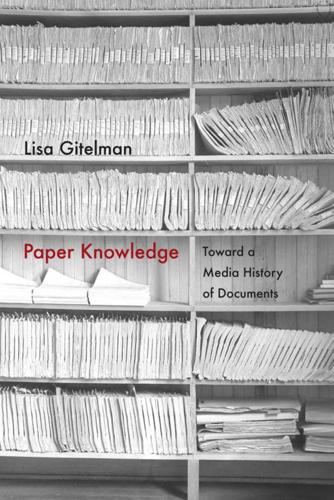
Paper Knowledge: Toward a Media History of Documents
by
Lisa Gitelman
Published 26 Mar 2014
Wirtén, No Trespassing, 58. The story is also told in detail in Owen, Copies in Seconds. Peter H. Salus, A Quarter Century of unix (Reading, MA: Addison Wesley, 1994), 34–36. See Dennis M. Ritchie and Ken Thompson, “The unix Time-Sharing System,” Communications of the acm 17, no. 7 (1974): 365–75. Frederick P. Brooks Jr., The Mythical Man-Month: Essays on Software Engineering, corrected ed. (Reading, MA: Addison-Wesley, 1982), 134. Ken Thompson and Dennis Ritchie, “Unix Programmer’s Manual,” accessed 25 May 2006, http://cm.bell-labs.com/cm/cs/who/dmr/mainintro.html. See also Salus, A Quarter Century of Unix, chapter 6.
…
My second example in this chapter, John Lions’s “Commentary on the Sixth Edition unix Operating System,” offers a way to think about xerography and the digital together, to begin to see how the one helped to make sense of the other and vice versa. Lions’s commentary was a self-published textbook for computer science students at the University of New South Wales. unix was an operating system written in 1969 by Ken Thompson, Dennis Ritchie, and members of the computer science research group at Bell Labs, the research arm of at&t . Rather than distribute unix commercially, at&t licensed the software to researchers worldwide for a nominal sum, sending both machine code and source code out to its licensees. The software was proprietary, though, so Lions could not legally distribute the commentary (which included the source code) in any but his XEROGRAPHERS OF THE MIND 97 immediate, licensed, context.
…
New York: Routledge, 2000. Riles, Annelise. “Introduction: In Response.” In Documents: Artifacts of Modern Knowledge, edited by Annelise Riles, 1–38. Ann Arbor: University of Michigan Press, 2006. ———. The Network Inside Out. Ann Arbor: University of Michigan Press, 2000. Ritchie, Dennis M., and Ken Thompson. “The unix Time-Sharing System.” Communications of the acm 17, no. 7 (1974): 365–75. Robertson, Craig. The Passport in America: The History of a Document. New York: Oxford University Press, 2010. Rorabaugh, W. J. The Craft Apprentice: From Franklin to the Machine Age in America. New York: Oxford University Press, 1986.

Coders at Work
by
Peter Seibel
Published 22 Jun 2009
So I'm not really much of an optimist about the future of computing. To be perfectly honest, that's one of the reasons why it wasn't hard for me to get out. I mean, I saw a world that was completely dominated by an unethical monopolist, and I didn't see much of a place for me in it. Ken Thompson Ken Thompson is the original bearded Unix hacker. He has spent a career working on whatever he finds interesting, which has, at various times, included analog computing, systems programming, regular expressions, and computer chess. Hired as a researcher at Bell Labs to work on the MULTICS project, after Bell Labs pulled out of MULTICS, Thompson went on, with Dennis Ritchie, to invent Unix, an endeavor for which he fully expected to be fired.
…
For Amelia Contents About the Author Acknowledgments Introduction Chapter 1: Jamie Zawinski Chapter 2: Brad Fitzpatrick Chapter 3: Douglas Crockford Chapter 4: Brendan Eich Chapter 5: Joshua Bloch Chapter 6: Joe Armstrong Chapter 7: Simon Peyton Jones Chapter 8: Peter Norvig Chapter 9: Guy Steele Chapter 10: Dan Ingalls Chapter 11: L Peter Deutsch Chapter 12: Ken Thompson Chapter 13: Fran Allen Chapter 14: Bernie Cosell Chapter 15: Donald Knuth Appendix A: Bibliography Index About the Author Peter Seibel is either a writer turned programmer or programmer turned writer. After picking up an undergraduate degree in English and working briefly as a journalist, he was seduced by the web.
…
This book takes a different approach to getting at what programming is, following in the tradition established when the literary journal The Paris Review sent two professors to interview the novelist E.M. Forster, the first in a series of Q&A interviews later collected in the book Writers at Work. I sat down with fifteen highly accomplished programmers with a wide range of experiences in the field—heads down systems hackers such as Ken Thompson, inventor of Unix, and Bernie Cosell, one of the original implementers of the ARPANET; programmers who combine strong academic credentials with hacker cred such as Donald Knuth, Guy Steele, and Simon Peyton Jones; industrial researchers such as Fran Allen of IBM, Joe Armstrong of Ericsson, and Peter Norvig at Google; Xerox PARC alumni Dan Ingalls and L Peter Deutsch; early Netscape implementers Jamie Zawinski and Brendan Eich; folks involved in the design and implementation of the languages the present-day web, Eich again as well as Douglas Crockford and Joshua Bloch; and Brad Fitzpatrick, inventor of Live Journal, and an able representative of the generation of programmers who came of age with the Web.

Into the Wild
by
Jon Krakauer
Published 2 Jan 1996
Because this seven-by-twenty-mile tract is surrounded on three sides by the protected acreage of the national park, it harbors more than its share of wolf, bear, caribou, moose, and other game, a local secret that’s jealously guarded by those hunters and trappers who are aware of the anomaly. As soon as moose season opens in the fall, a handful of hunters typically pays a visit to the old bus, which sits beside the Sushana River at the westernmost end of the nonpark tract, within two miles of the park boundary. Ken Thompson, the owner of an Anchorage auto-body shop, Gordon Samel, his employee, and their friend Ferdie Swanson, a construction worker, set out for the bus on September 6, 1992, stalking moose. It isn’t an easy place to reach. About ten miles past the end of the improved road the Stampede Trail crosses the Teklanika River, a fast, icy stream whose waters are opaque with glacial till.
…
Hundreds of delicate bones litter the clearing around the vehicle, scattered among thousands of porcupine quills: the remains of the small game that made up the bulk of McCandless’s diet. And at the perimeter of this boneyard lies one much larger skeleton: that of the moose he shot, and subsequently agonized over. When I’d questioned Gordon Samel and Ken Thompson shortly after they’d discovered McCandless’s body, both men insisted—adamantly and unequivocally—that the big skeleton was the remains of a caribou, and they derided the greenhorn’s ignorance in mistaking the animal he killed for a moose. “Wolves had scattered the bones some,” Thompson had told me, “but it was obvious that the animal was a caribou.
…
Special gratitude is owed to Linda Mariam Moore, Roman Dial, David Roberts, Sharon Roberts, Matt Hale, and Ed Ward for providing invaluable advice and criticism; to Margaret Davidson for creating the splendid maps; and to John Ware, my agent nonpareil. Important contributions were also made by Dennis Burnett, Chris Fish, Eric Hathaway, Gordy Cucullu, Andy Horowitz, Kris Maxie Gillmer, Wayne Westerberg, Mary Westerberg, Gail Borah, Rod Wolf, Jan Burres, Ronald Franz, Gaylord Stuckey, Jim Gallien, Ken Thompson, Gordon Samel, Ferdie Swanson, Butch Killian, Paul Atkinson, Steve Carwile, Ken Kehrer, Bob Burroughs, Berle Mercer, Will Forsberg, Nick Jans, Mark Stoppel, Dan Solie, Andrew Liske, Peggy Dial, James Brady, Cliff Hudson, the late Mugs Stump, Kate Bull, Roger Ellis, Ken Sleight, Bud Walsh, Lori Zarza, George Dreeszen, Sharon Dreeszen, Eddie Dickson, Priscilla Russell, Arthur Kruckeberg, Paul Reichart, Doug Ewing, Sarah Gage, Mike Ralphs, Richard Keeler, Nancy J.

I Can't Breathe
by
Matt Taibbi
Published 23 Oct 2017
— One person who didn’t necessarily think Thompson did the right thing was Meyerson, who in the days after the Liang protests sat down in his office and pondered the whole strange case. Meyerson’s take on Thompson was the same as his take on Donovan, that law enforcement can’t be trusted to investigate law enforcement. “I actually think that it’s great that Ken Thompson got the indictment, but my position from the outset was that Ken Thompson should have disqualified himself,” Meyerson said. “As progressive as he may be as a district attorney, we can never forget that he’s still a district attorney.” Meyerson was still waiting for an answer from Judge Garnett after the Staten Island hearing. He didn’t seem to be on the edge of his chair in suspense.
…
But as a rule, local prosecutors never embraced the argument that prosecuting police represented an inherent conflict, although this was becoming more of an issue in legal circles by the time the Garner case rolled around. Instead, prosecutors usually proceeded in one of two ways. Occasionally, a “progressive” DA might keep the case and try to treat an offense committed by police like it was just another crime. Brooklyn’s Ken Thompson would symbolize this approach that very year, in a case involving a rookie cop who shot a young black man in a project stairwell. Thompson went to his grand jury and got an indictment, infuriating police. Donovan chose another, more typical path. — Adding to the pressure was the devastating August 1 report from the city medical examiner’s office on Garner’s death.
…
Liang said he didn’t know if he could do CPR better than Butler, so he didn’t intervene. The case proceeded almost as an exact inverse of the Garner affair. Whereas Bratton had quickly thrown Pantaleo in the soup, describing his takedown as a chokehold, in the case of Liang he immediately called the death “accidental.” Meanwhile, Brooklyn district attorney Ken Thompson, an African American, proceeded exactly as Donovan had not. He asked the grand jury to hand out a spate of serious charges, and he worked fast. On February 10, the grand jury complied, hitting Liang with second-degree manslaughter, criminally negligent homicide, second-degree assault, reckless endangerment, and two counts of official misconduct.
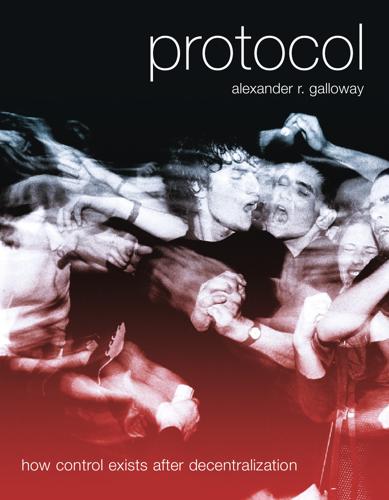
Protocol: how control exists after decentralization
by
Alexander R. Galloway
Published 1 Apr 2004
A significant portion of these computers were, and still are, Unix-based systems. A significant portion of the software was, and still is, largely written in the C or C++ languages. All of these elements have enjoyed unique histories as protocological technologies. The Unix operating system was developed at Bell Telephone Laboratories by Ken Thompson, Dennis Ritchie, and others beginning in 1969, and development continued into the early 1970s. After the operating system’s release, the lab’s parent company, AT&T, began to license and sell Unix as a commercial software product. But, for various legal reasons, the company admitted that it “had no intention of pursuing software as a business.”10 Unix was indeed sold by AT&T, but simply “as is” with no advertising, technical support, or other fanfare.
…
These engineers were not virus writers, nor were they terrorists or criminals. Just the opposite, they prized creativity, technical innovation, and exploration. Core War was a fun way to generate such intellectual activity. The practice existed for several years unnoticed. “In college, before video games, we would amuse ourselves by posing programming exercises,” said Ken Thompson, co-developer of the UNIX operating system, in 1983. “One of the favorites was to write the shortest self-reproducing program.”20 The engineer A. K. Dewdney recounts an early story at, I assume, Xerox PARC about a self-duplicating program called Creeper that infested the computer system and had to be brought under control by another program designed to neutralize it, Reaper.21 Dewdney brought to life this battle scenario using his own gaming language called Redcode.
…
Douglas McIlroy, head of the Computing Techniques Research Department at Bell Labs, and a program called Worm created by John Shoch (and Jon Hupp) of Xerox Palo Alto Research Center. See A. K. Dewdney, “Computer Recreations,” Scientific American, March 1984, p. 22. For more on Shoch and Hupp, see “The Worm Programs,” Communications of the ACM, March 1982. Many attribute the worm concept to the science fiction novel Shockwave Rider by John Brunner. 20. Ken Thompson, “Reflections on Trusting Trust,” in Computers Under Attack: Intruders, Worms, and Viruses, ed. Peter Denning (New York: ACM, 1990), p. 98. 21. Dewdney, “Computer Recreations,” p. 14. 22. Jon A. Rochlis and Mark W. Eichin, “With Microscope and Tweezers: The Worm from MIT’s Perspective,” in Computers Under Attack: Intruders, Worms, and Viruses, ed.

The End of Wall Street
by
Roger Lowenstein
Published 15 Jan 2010
SULLIVAN, replaced Greenberg as head of AIG but struggled to get a grip on CDO risk LAWRENCE SUMMERS, as Rubin’s headstrong deputy at Treasury, helped to thwart derivatives regulation; later, as Treasury secretary, was a skeptic of Fannie and Freddie; named White House economic adviser by Obama RICHARD SYRON, chief executive of Freddie Mac as it accumulated massive mortgage portfolio JOHN THAIN, former Goldman executive who replaced O’Neal as CEO of Merrill Lynch; after early stock sale resisted advice to raise more equity G. KENNEDY (KEN) THOMPSON, CEO of Wachovia, acquired high-flying Golden West, even as he predicted it could get him fired PAOLO TONUCCI, Lehman treasurer, prepared a list of assets that the Fed never asked to see DAVID VINIAR, Goldman executive vice president and chief financial officer, became worried when the firm’s mortgage portfolio lost money ten days running MARK WALSH, commercial property banker for Lehman, struck risky deals in a frothy market KEVIN WARSH, Fed governor and colleague of Bernanke’s, fretted over Treasury’s support of Fannie and Freddie SANFORD I.
…
Moreover, it had to keep making bigger acquisitions to maintain its growth rate. The banking industry as a whole grows only 1.5 times as fast as the GDP (say, about 5 percent a year). Since Wachovia’s growth rate had been in double digits, it was clearly destined to slow down. Nonetheless, its CEO, a native North Carolinian named G. Kennedy “Ken” Thompson, was publicly committed to maintaining its growth. Acquisitions were the only route. In the spring of 2006, Lehman Brothers suggested that Wachovia might want to acquire one of its clients. The client was Golden West. Wachovia knew all about Golden West’s option ARM business. It also was aware that the subprime market could be at a peak.
…
In the meantime, they led gilded lives; they shuttled in private jets, they nested in baronial mansions and weekend country homes. Their pay engendered a false sense of entitlement and invincibility. Ultimately, the bankers fooled themselves. If their personal fortunes were guaranteed, how could the fate of their institutions be otherwise? In 2006, Ken Thompson earned $18 million for his handiwork in acquiring Golden West; Daniel Mudd netted $15 million from Fannie Mae; Angelo Mozilo, $43 million at Countrywide; John Mack, $41 million at Morgan Stanley; Lloyd Blankfein, $55 million at Goldman; Richard Fuld, $28 million at Lehman; and James Cayne, $40 million at Bear Stearns.19 Such sums reflected a suave self-assurance and remunerated arrogance.
JavaScript: the good parts
by
Douglas Crockford
Published 15 Nov 2008
The methods that work with regular expressions are regexp.exec, regexp.test, string.match, string.replace, string.search, and string.split. These will all be described in Chapter 8. Regular expressions usually have a significant performance advantage over equivalent string operations in JavaScript. Regular expressions came from the mathematical study of formal languages. Ken Thompson adapted Stephen Kleene's theoretical work on type-3 languages into a practical pattern matcher that could be embedded in tools such as text editors and programming languages. The syntax of regular expressions in JavaScript conforms closely to the original formulations from Bell Labs, with some reinterpretation and extension adopted from Perl.
…
The methods that work with regular expressions are regexp.exec, regexp.test, string.match, string.replace, string.search, and string.split. These will all be described in Chapter 8. Regular expressions usually have a significant performance advantage over equivalent string operations in JavaScript. Regular expressions came from the mathematical study of formal languages. Ken Thompson adapted Stephen Kleene's theoretical work on type-3 languages into a practical pattern matcher that could be embedded in tools such as text editors and programming languages. The syntax of regular expressions in JavaScript conforms closely to the original formulations from Bell Labs, with some reinterpretation and extension adopted from Perl.
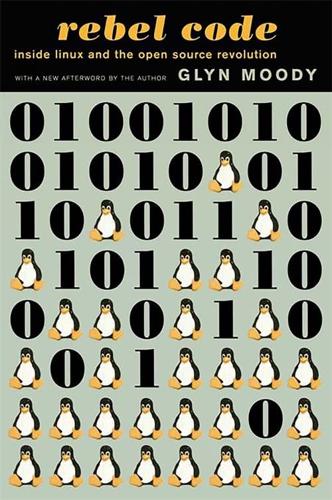
Rebel Code: Linux and the Open Source Revolution
by
Glyn Moody
Published 14 Jul 2002
“And that left the not-quite half-dozen Bell employees who had been involved in the project without anything to do,” Salus continues, “but with a large number of ideas they had picked up from the cross-fertilization with GE and with MIT.” Among them were Ken Thompson and Dennis Ritchie; they decided that a “cut-down version of this incredible project could be doable for a much smaller machine” than the original project used. “The machine that the project was working on was a GE 645, and it was what you would call a large piece of iron,” Salus says. “Dennis and Ken began plotting down some ideas on a blackboard,” he continues. “In August of ’69, Ken Thompson and his spouse had a new son and it was now almost a year old, and none of their relatives, all of whom were on the West Coast of the U.S., had seen them.
…
Wirzenius and Linus were about to discover Unix. 2 The New GNU Thing THE PROGRAM THAT CAUSED LINUS’S HEART to beat a little faster in the fall of 1990 was Digital’s Ultrix, one of the many commercial variants of the Unix operating system. Others included Sun’s Solaris, IBM’s AIX and Hewlett-Packard’s HP-UX. Despite the confusion of versions, they all derived from the original Unix system created by Ken Thompson and Dennis Ritchie at AT&T’s Bell Labs in 1969–the year Linus was born. Peter Salus, author of A Quarter Century of Unix, generally regarded as the standard history of the operating system, explains how Unix came about: “At the beginning of 1969, there was a group of people working on a project that was MIT, AT&T Bell Labs and General Electric.
…
They are rightly more interested in its performance and capabilities at the user level. I would generally agree that microkernels are probably the wave of the future. However, it is in my opinion easier to implement a monolithic kernel. It is also easier for it to turn into a mess in a hurry as it is modified. Regards, Ken “Ken” is Ken Thompson, the inventor of Unix. Between Linus and Tanenbaum, the tone became almost playful. Picking up again on the two main themes, kernel design and portability, Tanenbaum wrote, “I still maintain the point that designing a monolithic kernel in 1991 is a fundamental error. Be thankful you are not my student.
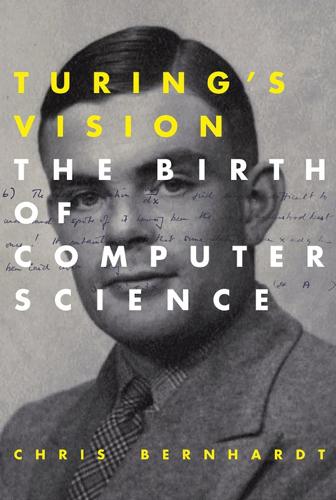
Turing's Vision: The Birth of Computer Science
by
Chris Bernhardt
Published 12 May 2016
If you write a new compiler, to be absolutely sure that it is correct, it is not enough to just check your program, but you need to know that the compiler that is compiling it is trustworthy. It is possible that the original compiler could insert a Trojan horse into the compiled versions of subsequent compilers. Ken Thompson, one of the main designers of UNIX, brought this to public attention when he discussed this in his acceptance speech for the Turing Award in 1983.1 Chapter 7 1. The Greek classical philosophers used this technique in many of their arguments. In this context it is usually referred to as reductio ad absurdum. 2.
…
See also Acceptance problem; Blank tape problem; Halting problem Universal computer/machine, 12, 87, 91 u-substitution, 62 von Neumann, John, 26, 97, 148, 155, 164 von Neumann architecture, 97, 155 Whitehead, Alfred North, Principia Mathematica, 7, 8, 10, 16 Wiener, Norbert, 26 Williams, Frederick, 156 Wolfram, Stephen, 85, 103, 164 Zuse, Konrad, 154 1 “Reflections on Trusting Trust” was presented by Ken Thompson in 1983. It was published in the Communications of the ACM and is widely available on the web.
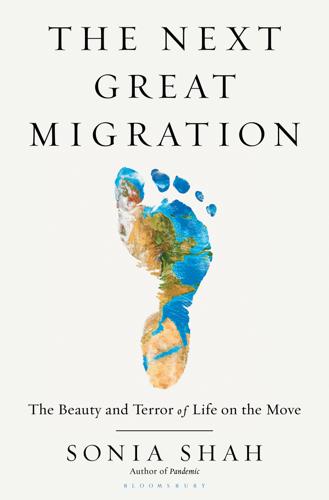
The Next Great Migration: The Beauty and Terror of Life on the Move
by
Sonia Shah
To calculate the burden caused by wildlife on the move, invasion biologists had included not just the damage that newcomers cause but the cost of preemptively getting rid of them, too. They excluded the economic benefits of wild migrants. Including the benefits only of the introduced plants that contribute to the global food supply added $800 billion to the plus side of the equation. When the botanist Ken Thompson compared the impact44 of successful introduced species to that of successful resident species, he found “in almost all respects they were the same.” Even some of the most prominent newcomers failed to fulfill invasion biology’s predictions. Zebra mussels cannot be blamed for the collapse of native clams, which face a number of challenges besides the newcomer’s appetites.
…
The remains of animals had long disappeared, but the pollen shed from the plants, trees, herbs, and shrubs that had grown in the area had settled in those sedimentary layers, one atop the other, sinking deeper over time. I learned about what Lourens and his team found thanks to a casual mention of their 2013 paper in Ken Thompson’s book about the folly of splitting wild creatures into natives and aliens.49 As far as I know, its findings had never reached a broad audience, the way alarmist stories about foreign plants and animals often did. There’d been no magazine stories or radio episodes about Lourens’s study. But the glimpse into biological history that it offered struck me as deeply moving.
…
Buss, “Bird Detection by Radar,” Auk 63 (1946): 315–18; David Clarke, “Radar Angels,” Fortean Times 195 (2005), https://drdavidclarke.co.uk/secret-files/radar-angels “practically in league with the Nazis” Thompson, Where Do Camels Belong?, 39. the arrival of Asian chestnut trees Mark A. Davis, Ken Thompson, and J. Philip Grime, “Charles S. Elton and the Dissociation of Invasion Ecology from the Rest of Ecology,” Diversity and Distributions 7 (2001): 97–102; Gintarė Skyrienė and Algimantas Paulauskas, “Distribution of Invasive Muskrats (Ondatra zibethicus) and Impact on Ecosystem,” Ekologija 58, no. 3 (2012); Elton, Ecology of Invasions, 21–27; Harold A.
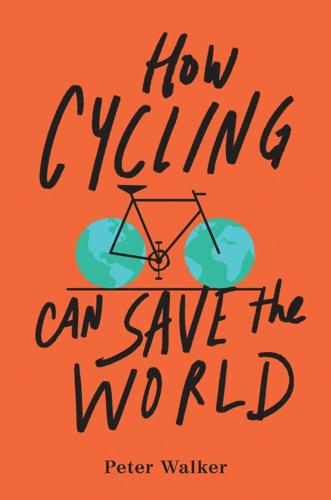
How Cycling Can Save the World
by
Peter Walker
Published 3 Apr 2017
Take an event a year or so ago at Signhills Academy, a school in Cleethorpes, a small town on the northeast coast of England, where a class of students ages ten and eleven were visited by construction multinational Balfour Beatty. A company representative handed out high-visibility vests, with the exciting news that the child who wore theirs most often in the coming months would win a bicycle. “The vests are really important as children can do strange things on the road and many walk to school,” head teacher Ken Thompson told the local paper. Meanwhile Dave Poucher, the Balfour Beatty senior traffic engineer handing out the vests, said: “We do it to get the message across that safety is everybody’s business, from birth until death.”3 From birth until death. This is astonishing, appalling stuff. Of course, making sure children know roads are dangerous places, and that too many car drivers drive overly fast and don’t always concentrate, is a sad and basic necessity of modern life.
…
Those “strange things” children do presumably include being impulsive and distracted. In other words, being children. And yet it’s they who are told they must adapt to a hazardous traffic system. A ninety-pound child is seen as facing an almost equal burden of responsibility for traffic safety as does an adult driving a one-ton vehicle. Ken Thompson and Balfour Beatty might have spent their time and effort more productively in agitating for slower and rigidly enforced urban speed limits for cars. The common rejoinder to all this is for people to say: of course drivers must be careful, but surely everyone else must do what they can. In many ways it’s a fair argument, but it ignores one vital point: it is only roads where we see this supposedly shared culpability.
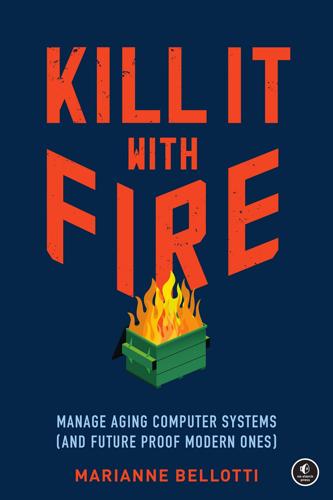
Kill It With Fire: Manage Aging Computer Systems
by
Marianne Bellotti
Published 17 Mar 2021
The story of Linux kicks off with the breakup of Bell Systems in 1982, nearly a decade before its creation. A 1956 consent decree against AT&T had forbidden the telecom giant from “any business other than the furnishing of common carrier communications services.” This meant that when Bell Labs computer scientists Dennis Ritchie, Ken Thompson, and Rudd Canaday began developing Unix in the 1970s, no one was sure whether AT&T was allowed to sell it. The lawyers at AT&T decided to play it safe and allow it to be sold to academic and research institutions with a copy of its source code along with the software.6 Having the source code made it easy to port Unix to different machines as well as modify and debug it.
…
Meanwhile, AT&T’s lawyers were trying to figure out what to do with Unix, and they were waffling between their original determination and a more traditional restrictive approach to intellectual property. Unix historian Peter Salus tells the story of how AT&T’s developers actively participated in the piracy of their own intellectual property. A large number of bug fixes was collected, and rather than issue them one at a time, a collection tape was put together by Ken [Thompson]. Some of the fixes were quite important. . . . I suspect that a significant number of the fixes were actually done by non-Bell people. Ken tried to send it out, but the lawyers kept stalling and stalling and stalling. Finally, in complete disgust, someone “found” a tape on Mountain Avenue [the address of Bell Laboratories was 600 Mountain Avenue, Murray Hill, NJ] which had the fixes.
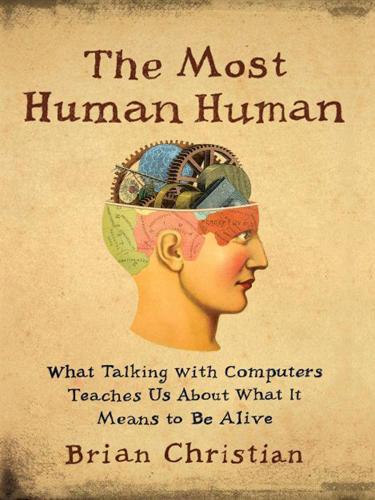
The Most Human Human: What Talking With Computers Teaches Us About What It Means to Be Alive
by
Brian Christian
Published 1 Mar 2011
Kasparov was a matter of the former’s vastly superior (by a factor of roughly 100 million) search speed versus the latter’s vastly superior pruning and heuristics—which moves are worth looking at, and how they bode—what you might call intuition. 6. (move sequences) 7. Again, most games are over in 30 to 40. 8. The endgame database that they’re referring to is the work, in the 1980s, of Ken Thompson at the very same Bell Laboratories in Murray Hill, New Jersey, where Claude Shannon wrote the breakthrough paper on computer chess in 1950. 9. See, e.g., the figure from Jonathan Schaeffer’s landmark Science paper on computer checkers, of his program Chinook’s live search-tree analysis looking quite literally like a lightning bolt between the opening and ending book. 10.
…
Collected (under the title “Tennis Player Michael Joyce’s Professional Artistry as a Paradigm of Certain Stuff about Choice, Freedom, Discipline, Joy, Grotesquerie, and Human Completeness”) in A Supposedly Fun Thing I’ll Never Do Again (Boston: Little, Brown, 1997). 14 “I personally guarantee”: From the press conference after Game 6, as reported by Malcolm Pein of the London Chess Centre. 15 Claude Shannon, “Programming a Computer for Playing Chess,” Philosophical Magazine, March 1950, the first paper ever written on computer chess. 16 Hofstadter, in Weber, “Mean Chess-Playing Computer.” 17 Searle, in ibid. 18 “unrestrained threshold of excellence”: Ibid. 19 Deep Blue didn’t win it: As Kasparov said at the press conference, “The match was lost by the world champion [and not won by Deep Blue, was the implication] … Forget today’s game. I mean, Deep Blue hasn’t won a single game out of the five.” Bewilderingly, he remarked, “It’s not yet ready, in my opinion, to win a big contest.” 20 checkmate in 262: See Ken Thompson, “The Longest: KRNKNN in 262,” ICGA Journal 23, no. 1 (2000), pp. 35–36. 21 “concepts do not always work”: James Gleick, “Machine Beats Man on Ancient Front,” New York Times, August 26, 1986. 22 Michael Littman, quoted in Bryn Nelson, “Checkers Computer Becomes Invincible,” msnbc.com, July 19, 2007. 23 Garry Kasparov, How Life Imitates Chess (New York: Bloomsbury, 2007). 24 Charles Mee, in “Shaped, in Bits, Drips, and Quips,” Los Angeles Times, October 24, 2004; and in “About the (Re)Making Project,” www.charlesmee.org/html/about.html. 25 “doesn’t even count”: From Kasparov’s remarks at the post–Game 6 press conference. 26 Jonathan Schaeffer et al., “Checkers Is Solved,” Science 317, no. 5844 (September 14, 2007), pp. 1518–22.
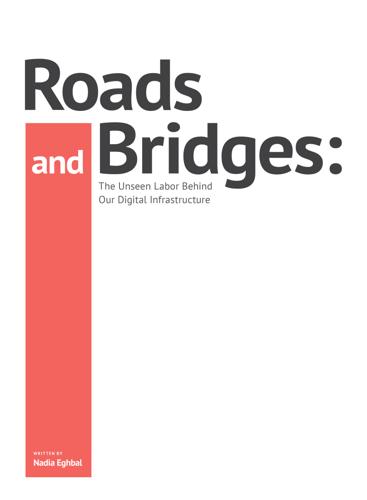
Roads and Bridges
by
Nadia Eghbal
Within a company Sometimes, the project starts within a company. Here are a few examples that demonstrate the different ways in which an open source project might be supported by a company’s resources: Go, the new programming language previously mentioned, was developed at Google in 2007 by engineers Robert Griesemer, Rob Pike, and Ken Thompson, who created Go as an experiment. Go is open source and accepts contributions from the broader community. However, its core maintainers are employed full-time by Google to work on the language.[46] React is a new JavaScript library that is growing in popularity. React was created by Jordan Walke, a software engineer at Facebook, for internal use on Facebook’s news feed.

Smart Mobs: The Next Social Revolution
by
Howard Rheingold
Published 24 Dec 2011
Bill Gates stuck by his declaration, and by the 1990s he had become the world’s richest man by selling the operating system used by 90 percent of the desktop computers in the world. In 1969, AT&T Bell Labs pulled out of ARPA’s Multics operating system project, and several Bell Labs programmers who missed the sense of community started working on their own unofficial OS project. Programmer Ken Thompson created a game on a small computer that had come into his hands, in the process writing a “kernel” that would end up growing into the OS that collaborator Brian Kernighan named Unix in 1970. The name was a pun on the abandoned Multics project.53 The Unix creators made their source code publicly available to other programmers and invited collaboration in creating software that could make Unix more useful, a decision that gave birth to a whole new way of developing software.
…
Computer software is distributed for use in the form of “object code,” a translation of the original (“source”) program into a human-unreadable but machine-executable collection of zeroes and ones. By distributing the source code, the Unix creators made it possible for other programmers to understand how the software works and to make their own modifications—harking back to the days of the paper tape in the unlocked drawer. Ken Thompson started duplicating Unix source code and utilities on magnetic tapes, labeling and documenting them with the words “Love, Ken,” and mailing the tapes to friends.54 Unix software became the OS of the Net. In turn, the Internet created a rich environment for Unix programmers to establish one of the earliest global virtual communities.
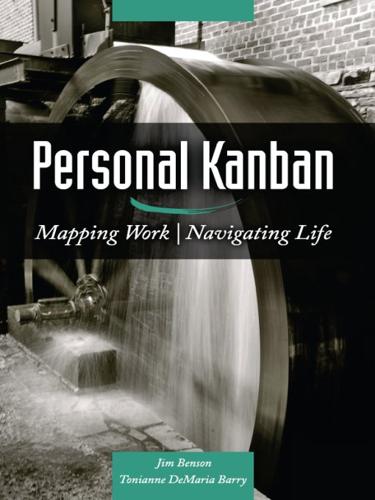
Personal Kanban: Mapping Work, Navigating Life
by
Jim Benson
and
Tonianne Demaria Barry
Published 2 Feb 2011
And my friends and colleagues who, over the years, joined me for a stroll through an idea, provided that key epiphany-producing comment, or thoughtful redirection. They include Nancy White, Jay Fienberg, John and Susan von Seggern, Jerry Michalski, Howard Rheingold, Jon Ramer, Jeanine Anderson, Greg MacKinnon, Ken Thompson, Frank Provenzano, Ed Vielmetti, Kevin Jahne, Alan Cady, Bart Cima, Chad Nabity, Simon Bone, Christopher J. Zorn, Monte Page, Jessica Margolin and Trevor Blake. If you pick one thing to do, and do it completely, people will notice. ~ Trevor Blake For Tonianne: Duncan, who through hell, heaven, and all that lies between, has been my guide.

Bread, Wine, Chocolate: The Slow Loss of Foods We Love
by
Simran Sethi
Published 10 Nov 2015
What we do know is that the United States is experiencing the second largest die-off since 2010, and beekeepers lost more than 40 percent of their honeybee colonies from April 2014 to April 2015.65 Scientists attribute the global decline of pollinators to stress and increasingly inhospitable environments due to industrialized agriculture’s use of products like neonicotinoids, a class of synthetic insecticides that have a similar composition to nicotine, the chemical found in cigarettes. “Like nicotine,” explains plant biologist Ken Thompson, “neonicotinoids are extremely effective nerve poisons, but unlike nicotine they are really only toxic to insects and are very safe to use.”66 Or so we thought. Swedish scientists studied the impacts of neonicotinoids on wild bee populations and found that “such insecticidal use can pose a substantial risk to wild bees in agricultural landscapes, and the contribution of pesticides to the global decline of wild bees may have been underestimated.”67 Although the study focuses on wild bees, bees all around the world are experiencing adverse effects due to the increased use of these insecticides.
…
19073/Nearly-one-in-ten-wild-bee-species-face-extinction-in-Europe-while-the-status-of-more-than-half-remains-unknown-IUCN-report. 65.Kim Kaplan, “Bee Survey: Lower Winter Losses, Higher Summer, Increased Total Annual Losses,” USDA Agricultural Research Service, May 13, 2015, http://ars.usda.gov/is/pr/2015/150513.htm. 66.Ken Thompson, “The Nerve Poison Harming Our Bees,” The Telegraph, May 11, 2012, http://www.telegraph.co.uk/gardening/9257431/The-nerve-poison-harming-our-bees.html. 67.Maj Rundlöf et al., “Seed Coating with a Neonicotinoid Insecticide Negatively Affects Wild Bees,” Nature 521 (May 2015): 77–80, doi:10.1038/nature14420. 68.Thompson, “The Nerve Poison Harming Our Bees.” 69.
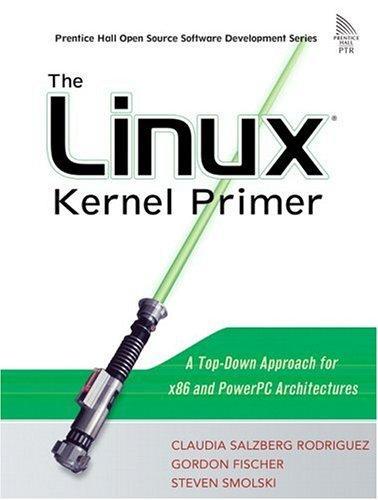
The Linux kernel primer: a top-down approach for x86 and PowerPC architectures
by
Claudia Salzberg Rodriguez
,
Gordon Fischer
and
Steven Smolski
Published 15 Nov 2005
UNIX development began with the porting of a stripped-down version of MULTICS in an effort to develop an operating system to run in the PDP-7 minicomputer that would support a new filesystem. The new filesystem was the first version of the UNIX filesystem. This operating system, developed by Ken Thompson, supported two users and had a command interpreter and programs that allowed file manipulation for the new filesystem. In 1970, UNIX was ported to the PDP-11 and updated to support more users. This was technically the first edition of UNIX. In 1973, for the release of the fourth edition of UNIX, Ken Thompson and Dennis Ritchie rewrote UNIX in C (a language then recently developed by Ritchie). This moved the operating system away from pure assembly and opened the doors to the portability of the operating system.
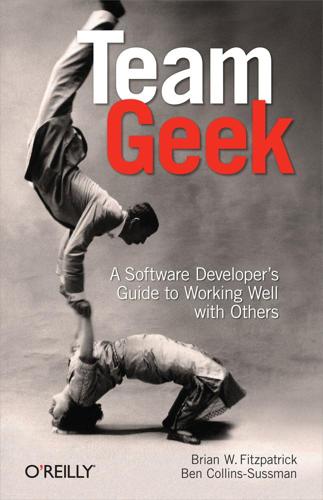
Team Geek
by
Brian W. Fitzpatrick
and
Ben Collins-Sussman
Published 6 Jul 2012
Linux is hundreds of times bigger than that and was developed by hundreds of smart people. Linus’s real achievement was to lead these people and coordinate their work; Linux is the shining result of their collective labor. (And Unix itself was written by a small group of smart people at Bell Labs, not entirely by Ken Thompson and Dennis Richie.) On that same note, did Stallman personally write all of the Free Software Foundation’s software? He wrote the first generation of Emacs. But hundreds of others were responsible for bash, the GCC tool chain, and all the rest of the software that runs on Linux. Steve Jobs led an entire team that built the Macintosh, and while Bill Gates is known for writing a BASIC interpreter for early home computers, his bigger achievement was building a successful company around MS-DOS.
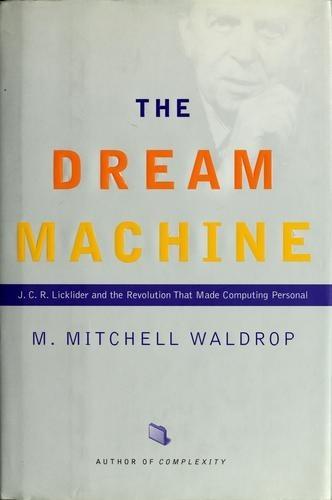
The Dream Machine: J.C.R. Licklider and the Revolution That Made Computing Personal
by
M. Mitchell Waldrop
Published 14 Apr 2001
Bell Labs' managers had grown increasingly impatient with Multics-they needed a computer system now, not in some far-distant fu- ture-and work on it there was already close to a standstill. The January decision simply shut down that last little bit of activity and put the laboratory on track to buy a conventional GE 635 computer that would operate in a conventional batch-processing mode. But then a funny thing happened: two of Bell's former Multicians, Ken Thompson and Dennis Ritchie, began suffering from withdrawal pangs. As baroque as Multics was, it was responsive, interactive, alive. And once they no longer had it, Thompson and Ritchie found themselves craving that interactiv- ity. So, good hackers that they were, they decided to write a little time-sharing system of their own.
…
Actually, Unix was "free" only because AT&T wasn't allowed to sell it; until the breakup, in 1982, the company was a regulated telephone monopoly and as such was barred from doing much of anything in the computer business. But Unix was hackable because it was about as open as a system could get. Order the data tapes (nominal charge: $150 for materials), and you got the complete source code, which was yours to modify as you wished. Dennis Ritchie and Ken Thompson had created Unix for their own use back in 1969, after Bell Labs' withdrawal from the Multics partnership, and the project had retained that loose, hands-on feeling ever since. Then, too, Ritchie and Thompson had created Unix with hacking in mind, deriving its basic structure from Fernando Corbato's CTSS via Multics-namely, a tool kit of utilities and software routines that the user could call upon to per- form specific tasks, all built on top of an invisible "kernel" of software that func- tioned as the autonomic nervous system of the computer, seamlessly moving bits through the machine at a level below the user's consciousness.
…
Minsky, OH 179; Allen Newell, OH 227; Bernard More OlIver, OH 097; Severo Ornstein, OH 183, OH 258; RaJ Reddy, OH 231; Dennis Ritchie, OH 239; Lawrence G. Roberts, OH 159; Douglas T. Ross, OH 65, OH 178;Jack P. Ruina, OH 163;Jules I. Schwartz, OH 161; Ivan Sutherland, OH 171; Robert A. Tay- lor, OH 154; Ken Thompson, OH 239;Joseph F. Traub, OH 70, OH 89, OH 94; Keith W. Uncapher, OH 174; Frank M. Verzuh, OH 63; David A. Walden, OH 181; Willis H. Ware, OH 37; Frederick W. Weingarten, OH 212; David). Wheeler, OH 132; Terry Allen Winograd, OH 237; Patnck H. Winston, OH 196. 484 BIBLIOGRAPHY BOOKS AND ARTICLES Again, the written matenals listed below are only a tiny fraction of what's avaIlable on the history of computing, but they were partICularly helpful to me in telling the story of LICk and the ARPA com- munity.
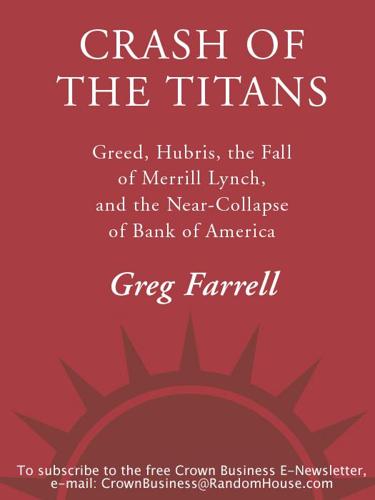
Crash of the Titans: Greed, Hubris, the Fall of Merrill Lynch, and the Near-Collapse of Bank of America
by
Greg Farrell
Published 2 Nov 2010
But the blowup in the fixed-income department, engineered by Osman Semerci, the man identified by Fakahany as a future leader at Merrill Lynch, had damaged the credibility of O’Neal’s closest confidant. An aggravating circumstance was that Merrill’s risk-management systems, which had failed miserably in overseeing Semerci, also reported to Fakahany. O’Neal asked Fleming if he still had a good relationship with Ken Thompson, chief executive of Wachovia Bank in Charlotte. “Yes,” said Fleming. For more than a decade, like its crosstown competitor, BofA, Wachovia had been a serial acquirer of other banks. Merrill Lynch was Wachovia’s primary advisor. In most of those deals, Fleming had been Merrill’s lead banker, working with Thompson and other Wachovia executives to bring complicated transactions to fruition.
…
IF MERRILL LYNCH WAS sold to Bank of America, the Charlotte colossus would crush the place and take full ownership, firing thousands of people and eviscerating the organization, O’Neal believed. That was Ken Lewis’s style: He paid top dollar, then took full control. Wachovia, O’Neal figured, would be different. There would be a “softer landing” for Merrill Lynch. The price would not be as high, but Ken Thompson might allow Merrill to retain some autonomy. A deal with Wachovia would resemble a merger more than an acquisition. With a special board meeting a few days away, O’Neal started shopping for support among directors. Once again he approached his old friend Cribiore, in the hopes of enlisting his support for the idea of a Wachovia deal.

Dawn of the Code War: America's Battle Against Russia, China, and the Rising Global Cyber Threat
by
John P. Carlin
and
Garrett M. Graff
Published 15 Oct 2018
In Europe, a German collective known as the Chaos Computer Club thrived, taking advantage of the fact that European laws were even more out-of-date than American ones, so it wasn’t even illegal to crack into a system and poke around. Even as those groups gained prominence online, security remained at best an ancillary topic of concern; it took an explicit warning from one of the field’s pioneers to move it toward the center. In 1984, programmer Ken Thompson, who had codesigned and invented the UNIX operating system, received one of the computing industry’s highest honors, the A. M. Turing Award, named after groundbreaking English computer scientist Alan Turing. Thompson had spent his entire career in technology, watching as the online environment evolved, and he felt that the world was at a turning point; he used his award acceptance speech to lay out a devious program he’d once explored writing software code that almost invisibly created its own back door—a back door that would be left open even as new versions of the software were created.
…
Nikki Finke, “A University Professor’s ‘Startling’ Experiments Began It All,” Los Angeles Times, January 31, 1988, articles.latimes.com/1988-01-31/news/vw-39340_1 _computer-virus; and “When Did the Term ‘Computer Virus’ Arise?” Scientific American, September 2, 1997, scientificamerican.com/article/when-did-the-term-compute/. 43. Michelle Slatalla and Joshua Quittner, Masters of Deception: The Gang That Ruled Cyberspace (HarperCollins, 1995), 16. 44. Ken Thompson, “Reflections on Trusting Trust,” Turing Award Lecture, Communications of the ACM, vol. 1, no. 8, 1984, www.ece.cmu.edu/~ganger/712.fall02/papers/p761-thompson.pdf. 45. Linda Greenhouse, “House Approves Measure to Make Computer Fraud a Federal Crime,” New York Times, June 4, 1986, www.nytimes.com/1986/06/04/us/house-approves-measure-to-make-computer-fraud-a-federal-crime.html; Josephine Wolff, “The Hacking Law That Can’t Hack It,” Slate, September 27, 2016, www.slate.com/articles/technology/future_tense/2016/09/the_computer_fraud_and _abuse_act_turns_30_years_old.html; and Scott Mace, “Computer Bills in Works,” InfoWorld, October 14, 1985, books.google.com/books?
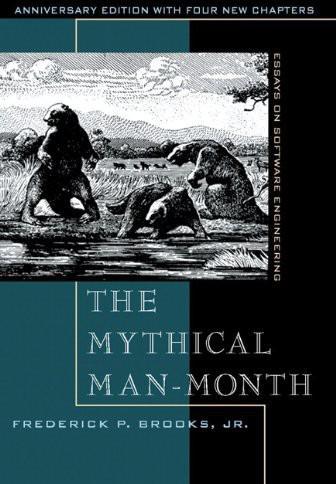
The Mythical Man-Month
by
Brooks, Jr. Frederick P.
Published 1 Jan 1975
E, Small Is Beautiful: Economics as if People Mattered, Perennial Library Edition. New York: Harper and Row, 1973, p. 244. Schumacher, op. cit., p. 34. A thought-provoking wall poster proclaims: "Freedom of the press belongs to him who has one." Bush, V., "That we may think," ^Atlantic Monthly, 176, 1 (April, 1945), pp. 101-108. Ken Thompson of Bell Labs, inventor of Unix, realized early the importance of big screens for programming. He devised a way to get 120 lines of code, in two columns, onto his primitive Tektronix electron-storage tube. He clung to this terminal through a whole generation of small-window, fast tubes.
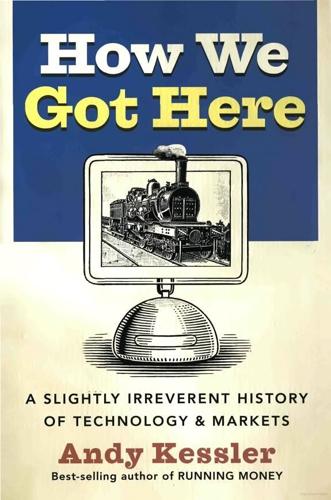
How We Got Here: A Slightly Irreverent History of Technology and Markets
by
Andy Kessler
Published 13 Jun 2005
Software and Networks In 1964, a consortium of MIT, Bell Labs and General Electric (which made computers for a while) announced a system called Multics, which was a time-sharing computer with users connected via a video display terminal and an electric typewriter. A green screen beat punched cards, but computers were still mainly used for number crunching tasks. In 1969, Bell Labbers Ken Thompson and Dennis Ritchie, with beards a la ZZ Top, fixed the then dead Multics software. They wrote a simpler version for Digital Equipment Corporation’s PDP mini-computers and named it UNICS, which stood for “castrated Multics.” This is the type of joke that programmers live for at 4 AM while waiting for their programs to compile.

Engineering Security
by
Peter Gutmann
Figure 63: Vista UAC dialog Another (informal) evaluation of Windows Vista’s (much-maligned) User Account Control (UAC) dialog, of which an example is shown in Figure 63, found that not one user noticed that the UAC dialog title had different colours in different situations [562], let alone knowing what it was that the different colours signified (the depicted dialog is another gem from the “Ken Thompson’s car” school of user interface design that’s discussed below). Another study, carried out by Microsoft themselves, found that only 13% of users could explain why they were seeing a UAC prompt at all [563]. Neither the official Microsoft overview of UAC in Microsoft TechNet [564] nor popular alternative information sources like Wikipedia [565] even document (at the time of writing) the existence of these colour differences, let alone indicate what they mean.
…
It requires digging deep down into an extremely long and geeky discussion of UAC to find that a red title means that the application is blocked by Windows Group Policy, blue/green means that it’s a Vista administrative application, grey means that it’s an Authenticode signed application, and yellow means that it’s not signed [566]. Bonus points if you can explain the significance of those distinctions. (The dialog in Figure 63 is reminiscent of a fable about the car that Ken Thompson, one of the creators of Unix, helped design. Whenever there’s a problem a giant ‘?’ lights up on the dashboard. When asked about this Ken responds that “the experienced user will usually know what’s wrong”. This dialog presents the same user interface as Ken’s car, just a giant ‘?’ flashing in the middle of the screen).
…
All of this confirms interaction designer Alan Cooper’s paraphrasing of architect Mies van der Rohe’s dictum “Less is more” into the user interface design principle “No matter how cool your user interface is, less of it would be better” [274]111. Case Study: Windows UAC Previous sections have described the usability problems of Windows Vista’s UAC prompts, which comes straight from the “Ken Thompson’s car” school of user interface design (it should be mentioned here that the open-source world is no better when it comes to communicating security information. For example GPG’s notorious “unusable public key” error covers everything from a disk error to an invalid signature to an incorrectly set system clock, with the sole mitigating factor for opensource being that seriously hardcore geeks have the option of stepping through the code using a debugger in order out find out what the real problem is).

This Is How They Tell Me the World Ends: The Cyberweapons Arms Race
by
Nicole Perlroth
Published 9 Feb 2021
Like so much else, nuclear weapons design was evolving away from discrete electronic control systems to more complex microchips. In dissecting those chips down to the very bit, Gosler could see that these advancements—and the complexity they introduced—would only create more room for error, malfunction, and eventually enemy subversion and attack. The previous year, Gosler had heard a famous lecture by Ken Thompson. Thompson, who had won the 1983 Turing Award for cocreating the Unix operating system, used his turn at the lectern to share his concerns on where technology was headed. He’d titled his lecture “Reflections on Trusting Trust,” and his conclusion was this: unless you wrote the source code yourself, you could never be confident that a computer program wasn’t a Trojan horse.
…
The reference to Sandia’s role in developing 97 percent of America’s non-nuclear weapons components is available on Sandia’s website: “Evaluating Nuclear Weapons: A Key Sandia Mission.” Eric Schlosser provided an entertaining, and disturbing, account of America’s nuclear weapons accidents in his 2013 book, Command and Control: Nuclear Weapons, the Damascus Accident and the Illusion of Safety (Penguin Press). Ken Thompson’s 1984 Turing Award speech, “Reflections on Trusting Trust,” is available here: www.cs.cmu.edu/~rdriley/487/papers/Thompson_1984_ReflectionsonTrustingTrust.pdf. Gosler’s Chaperon Experiments were also detailed in a 2016 dissertation by Craig J. Weiner, at George Mason University, titled: “Penetrate, Exploit, Disrupt, Destroy: The Rise of Computer Network Operations as a Major Military Innovation.”
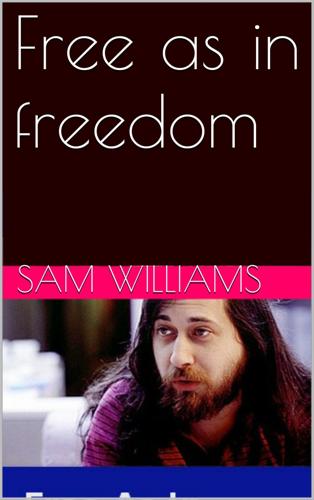
Free as in Freedom
by
Sam Williams
Published 16 Nov 2015
He began development of a GNU version of Emacs, the program he himself had been supervising for a decade. The decision was strategic. Within the Unix community, the two native editor programs were vi, written by Sun Microsystems cofounder Bill Joy, and ed, written by Bell Labs scientist (and Unix cocreator) Ken Thompson. Both were useful and popular, but neither offered the endlessly expandable nature of Emacs. In rewriting Emacs for the Unix audience, Stallman stood a better chance of showing off his skills. It also stood to reason that Emacs users might be more attuned to the Stallman mentality. Looking back, Stallman says he didn't view the decision in strategic terms.

The Switch: How Solar, Storage and New Tech Means Cheap Power for All
by
Chris Goodall
Published 6 Jul 2016
Index A Abramovitz, Yosef 64 absorption chilling 146 acetogens 242–3 Actinomyces 215 Africa food production 134 solar power 60–4 see also individual countries AGL 7 agriculture pumping operations 56–7 UK 226–7 Ainsworth, David 197–8, 199 air, carbon capture 249–54 air travel 224–5 algae 244–5 Algenol 245–6 alkanes 223 aluminium 108 American Physical Society 252 amine absorption 250 ammonia 229–30 anaerobic digestion (AD) 5, 131, 132, 135–41 Andasol 117 Andhra Pradesh 54 Apple 66, 67, 108 Arcelor Mittal 155, 243 archaea 234–5 Argonne National Laboratory 194 Arriba 154 artificial photosynthesis 246–9 asphalt 153 Atacama desert 59 Audi 232 Austin, Texas 53 Australia domestic electricity consumption 260 tracking 96 B bacteria 247–9 Bangladesh 16–17 banks funding solar 105, 106–7 interest rates 98–100 solar power predictions 50–1 batteries 5–6, 173, 240 car batteries 190–2 cost declines 44, 173, 176–9, 256 and demand charges 192–3 domestic 57, 171, 181–5 drones 185–7 flow batteries 174, 201–3, 206 grid storage 44, 187–90, 206–7, 219–20 lithium air 198–9 lithium ion 173–96, 199–201, 210 lithium sulphur 197–8 long term targets 194–5 PV plus battery 199–201 and time-of-use-pricing 162 24M 179–80 zinc-air batteries 201, 203–4 Becquerel, Edmond 74 behind the meter schemes 107, 108 Belgium demand response 152 liquid hydrocarbons 243 Bickl, Thomas 85, 86–90 biochar 225 biofuels see liquid fuels biogas Electrochaea 233–6 Tropical Power 134–41 see also carbon dioxide; methane biological methanation 233–8 biomass 13, 14, 15, 131–4, 142–6, 256 power to gas 233–8, 240 storing liquid hydrocarbons 220, 221–7 Tropical Power 135–42 Bishop, Pete 185–9 Bissell, David 200 Bloch, Mathias 181–2 Bloomberg 35, 42, 53, 60, 178 blue-green algae 244–5 Boardman, Brenda 164–5 Boston Consulting Group (BCG) 18, 19, 20, 176, 177, 178–9 BP 12–13 Bradford, Travis 22, 48–50 Brandao, Rafael 60 Brazil biofuels 223 pylon lines 120 solar electricity prices 3, 60 Breakthrough Energy Coalition 214, 244 Britwind 130–1 Bruce, Peter 198–9 Buffett, Warren 177 Burundi 64 Butler, Nick 41–2, 44 BYD 176–7 C Calgary 253 California demand response 156–8 domestic electricity storage 184 grid storage 201 power to gas 233 renewable energy 35 solar power cost 3 time-of-use-pricing 162, 163 CAM (Crassulacean Acid Metabolism) plants 135–41, 142–5 Cambridge Architectural Research 166 Canada air capture of CO2 253 demand response 154 grid batteries 202 time-of-use-pricing 159 carbon dioxide (CO2) air capture 213, 249–54 artificial photosynthesis 248 cement plants 238–40 diesel generators 149 and microbes 213, 215 plants 133, 135, 137 power to gas 232, 233 using to make liquid hydrocarbons 241, 243, 244–5, 246, 256 Carbon Engineering 253 carbon monoxide 241–2, 243 carbon tax 239, 253 cars component manufacturers 127–8 energy usage 11 hydrogen 228 PV film 89–90 see also electric cars Case, Chris 68–71, 73–4, 79–83 cement factories 238–40, 245 Chiang, Yet-Ming 179–80 Chile concentrating solar power 119 pylon lines 120 solar electricity prices 3 solar power 59–60 China coal-fired power stations 35 energy demand 11, 12 liquid hydrocarbons 243 solar power 24, 53–4, 66 and Zimbabwe 64 Chu, Steven 230 CIGS (copper indium gallium selenide) 90 Citibank 51 Climeworks 250–3 Clinton, Hillary 54 Clostridium Autoethanogenum 242–3 coal 40 Germany 46 Nigeria 60–1 coal-fired power stations Chile 59 China 11, 35 cost 122 demand 36–7 in developing world 58 India 55, 56, 58 move away from 7 Coal India Limited 58 Combined Cycle Gas Turbine (CCGT) plants 34–5, 37, 39, 40, 236 Committee on Climate Change (CCC) 47–8 compound growth 30–1 compressed air storage 207–8 concentrating solar power (CSP) 116, 117–21, 256 Connolly, Steve 154 conversion efficiency 73, 76–7, 78–9, 80 Cook, Tim 67 Cool Planet 225–6, 241 Cornwall 104–5, 206 cows 139–40 Crabtree, George 194, 195 Crescent Dunes 118 cyanobacteria 244–5 D demand charges 192–3 demand response 149–55, 166, 232, 237–8 and energy efficiency 163 in the home 156–8 what happens next 158–63 Denmark power to gas 233–4, 235 solar electricity costs 45 wind power 116, 124, 234 Deutsche Bank 51, 59, 176 diesel generators 57, 60, 121, 185, 199 demand response 148–9, 151 Hawaii 161, 199 Dinorwig 205 dispatchable power 199–200 Drax power station 131, 132 drones 185–7 Dubai 52 E Easter Island 133 Easton, Roger L 2 Einstein, Albert 75 Eisenberger, Peter 3, 19–20 electric cars 12, 156, 158, 224–5 batteries 173–8, 195 as grid backup 190–2 electricity 255 cutting power demand in the home 156–8 demand and supply 4, 5, 37–9, 147, 150–1, 215, 216–20 demand charges 192–3 demand response 149–55, 158–63, 166, 232, 237–8 distribution costs 55 domestic consumption 259–60 lighting 164–6 microgrids 62–3 power to gas 231–40 prices 37–8, 107, 257 storage 4–6, 43, 44, 173–254 time-of-use-pricing 158–63 transmission networks 58, 59, 61 see also solar power Electrochaea 233–40 electrolysis 220, 227–30, 231–40, 252–3 electrons 74–6, 78–9, 201 Enbala 154 Energiesprong 167–71 energy demand for 9–13, 144 and power 259–60 energy efficiency and demand response 163 insulation 167–72 lighting 165–6 Engie 7 Enterococcus 215 Entrade 145–6 Eos 203–4 EPR 15 ethanol 223, 243–5 Euphorbia Tirucalli 135, 137 experience curve 18–19, 33 batteries 175, 176–9, 187, 210 inverters 97 photovoltaics 22, 26, 30–1, 33 transistors 31–2 wind power 123 Exxon 3, 19–20 F Facebook 185–7 Farmer, Doyne 33 Fischer-Tropsch process 223, 252 Florida 245–6 flow batteries 174, 201–3, 206 food 132–4 Food and Agricultural Organisation (FAO) 142–3 fossil fuels 27–9, 33–40 see also coal; gas; oil France demand response 152, 155 gas grid 231–2 nuclear power 23 Fraunhofer Institute 3–4, 46–7, 104 Fritts, Charles 74 fullerene 72 G gas 7, 40 grid 231–2 power to gas 6, 213–15, 231–40 see also biogas; methane; syngas gas-fired power stations 150–1 ammonia 229 cost 4, 122 financing 34–5, 36–7, 39, 40, 99 power to gas 236, 238 US 35 gasification 132, 145–6 Gates, Bill 1, 6, 208, 214–15, 244, 255 Gebald, Christoph 252, 253 gene sequencing 18–19 geothermal 59, 108 Germany domestic electricity storage 181–5 electricity demand and supply 215, 217, 218–20, 229–30, 237 electricity price 101, 260 electricity production 260 gas grid 228–9, 231–2 hydrogen 228–9 oil storage 230 power to gas 232 solar power cost 3–4, 46–7 solar power funding 104, 106, 107 wind power 124 Ghent 243 gigawatt hours 260 gigawatts 259, 260 GM 176–7, 198 Google 66, 225 governments 6, 189 solar power tenders 51–3, 54–5, 59, 60 subsidies 50, 107–8, 126 GranBio 223 graphene 187 Greencoat Capital 109 grid integration costs 55–6 grid storage flow and zinc-air batteries 201–4 pumped hydro 205–7 PV plus battery 199–201 South Korea 204 GTM Research 96–7, 193, 201 H Haber Bosch process 229 Hafenbradl, Doris 238–9 Handelsbanken 105 Hawaii 161–2, 184, 199–201 heat pumps 12, 167 heating 12, 167 Heliatek 84–90 Helio100 120–1 heliostats 117–18 Henderson, Bruce 18, 20 Highview Power 208–10 Hinwil 250–1 Hinkley Point 15 Hofstetter, Dominic 233–6 hospitals 148, 149 houses batteries 57, 181–5 heating 12, 167 insulation 167–72 lighting 12, 164–6, 169 Solar House 57–8 see also residential PV installations Hutcheson, Dan 32 hydro-electric power 14, 15, 141–2, 159 pumped hydro 204–7 hydrogen 5, 213–15 conversion to methane 221, 231–40, 256 using electrolysis to generate 212, 220, 227–31, 252–3, 256 Hydrogenics 235 Hymind floating turbines 125–6 I Ibbenbeuren 229 Iceland 108 IKEA 19, 66, 166 Imergy 202 India coal-fired power stations 55–6, 58 solar electricity prices 3 Solar Houses 57–8 solar power 24, 53–8 insulation 167–72 Intel 20 interest rates 98–100, 101–2 International Energy Agency (IEA) 42–3, 45–6 inverters 91–5, 96, 97 investment 4, 100–14, 115, 214 corporate 66–7, 108 Investment and Pensions Europe 102 ITM Power 228–9 J Jelley, Nick 25 Joule Unlimited 244–5 K Kaua’i 199–200 Keith, David 253 Kennedy, Danny 42 Kenya 62–4, 145 Tropical Power 134–42 kilowatt hours 259 kilowatts 259–60 Kisii 62–3 Kiwi Power 149 Klein, Nina 71–3, 74, 85–6 Kohn, Rick 213, 215, 246 KPMG 54–7 L Lafond, Francois 33 Laikipia 135–41 Lancashire County Council 102, 103 Lanzatech 241–4 Lawrence Berkeley Laboratory (LBL) 46, 65 lead 83 learning curve 19, 23 LEDs 165–6, 169 Leggett, Jeremy 50 Lemnacae 139 levelised cost 98–101 LeVine, Steve 180 Liebreich, Michael 178 lighting 12, 164–6, 169 Lightsail 207–8 lignite 46 liquid air storage 208–10 liquid fuels 5, 6, 213–15 from biomass 220, 221–7 using microbes 221, 240–6, 256–7 lithium air batteries 198–9 lithium ion batteries 173–6, 192–5, 210 car batteries 190–2 cost declines 176–9 domestic 181–5 energy density 195 large-scale 185–90, 199–201 lithium supply 195–6 recycling 195, 196 24M 179–80 lithium sulphur batteries 197–8 Louisiana 226 M M-Pesa 63 MacKay, David 259 Madhya Pradesh 54 Manchester 39, 209 Mason, Mike 137–42, 143, 144 megawatts 259 Mermans, Pieter-Jan 38, 149–53, 155 Meteo 91 methane 131, 135, 137, 213–16 power to gas 221, 231–40, 256 methyl ammonium lead halides 80 microbes 212–15 artificial photosynthesis 247–9 making liquid hydrocarbons 221, 240–6, 256 power to gas 233–40 microgrids 62–3 mobile phones 61–2, 63–4, 185 Modi, Narendra 53 Monbiot, George 226 Moody’s 173, 193 Moore, Gordon 20 Moore’s Law 20–1, 32 Morocco 116, 119–20 Moylan, Andy 111–13 multi-junction cells 76–7 Musk, Elon 175 N Naam, Ramez 49–50 Nelson, Jenny 75 Netherlands home improvements 169, 170–1 storage in car batteries 191 Nevada 53, 118 New Mexico 244–5 NexWafe 78, 79 Nigeria 60–2 Nissan 176 Nissan LEAF 156 Nourse, Richard 109, 122 nuclear power stations 6, 15 costs 22–3, 48, 122 O Oahu 161–2 O’Dea, Christopher 103 offshore wind turbines 15, 124–6 Ohl, Russell 75 OhmConnect 156–8 oil, storage 230, 240–1 oil companies 6, 7–8 oligomer cells 84–90 onshore wind turbines 22, 122–5 Ontario 159, 202 Open Energi 153 Opuntia ficus-indica 135, 136, 138 Oregon 7, 223–4, 225 organic molecules 71–3, 74 organic photovoltaics 84–90 Osinbajo, Yemi 60–1 Ouarzazate 119 oversizing 91–5 Oxford Photovoltaics 68, 79–84 Oxis 197–8, 240 oxygen 234 P Palmer, Jason 166 Panasonic 175, 187–9 paper mills 152 passivation 78–9 Peabody Energy 40 peak shaving 193 see also time-of-use-pricing Pencil Cactus 135, 137 pension funds 4, 101–4, 106–7, 109–11, 112 pentacene 71 perovskites 68, 79–84 Peterhead 125–6 petrol 240 photons 74–5 photosynthesis artificial 246–9 CAM plants 135–7 photovoltaics, electricity prices 3, 45, 46, 51–3, 59, 60 photovoltaics (PV) 5–6, 8, 42–3, 74–6, 116, 255–8 and alternative sources of energy 33–40 availability 34, 55–6, 94–5, 211–12 Brazil 60 Burundi 64 capital and levelised costs 98–101 Chile 59–60 corporate investment 65–7 cost declines 1, 2–4, 21–33, 42, 45, 46–51, 123–4, 254 daily curve 90–6, 147, 260–1 experience curve 22, 26, 30–33 films 84–90 financing 4, 98–114 Germany 217, 218–20 grid integration costs 56 India 53–8 Kenya 62–4 Nigeria 60–2 oversizing 91–5 and pension funds 101–4 predictions 41–51 PV plus battery 199–201 S curve 25–6 system costs 96–7 and time-of-use-pricing 160–3 UK 215, 216–17 USA 65 Vanguard 1 2 Zimbabwe 64 see also solar cells; solar farms; solar panels PJM 155, 200–1 plants see biomass potassium hydroxide 253 power 259–60 power purchase agreements (PPAs) 51–3, 65, 101 power to gas (P2G) 231–40, 256 Powerhive East Africa Ltd 62–3 PowerOasis 185–90 Preqin 111–13 Prickly Pear 135, 136, 138 Primus Power 199 private electricity generators 148–9 pumped hydro 204–7 Punjab 54 pyrolysis 225–6 Q quantum dots 73 Quarry Battery 205–7 R Raizen 223 Red Rock Biofuels 223–4, 225, 241 renewable energy 13–15 see also geothermal; hydro-electric power; solar power; wind power residential PV installations investment 66, 100–1, 107, 110–11 PV film 89 storage 181–5 system costs 96–7 REstore 38–9, 149–55, 158 Robertson, Andrew 103, 112 Rombouts, Jan-Willem 151, 152 Roulstone, Tony 23 Rudd, Amber 40 Russia 226 S S curve 25–6 Sabatier reaction 231 Sainsbury’s 66 Schellnhuber, John 41 Schmickler, Arno 168, 170, 171 Schneider Electric 157–8 Scotland carbon-neutral housing 171 drones 186–7 wind power 122 seawater 245–6 second glass problem 43 second half of the chessboard problem 30–1 semiconductors 18 Sermol, Peter 110–11 sewage farms 154 Shao, Vic 193 Shell 7–8, 41, 43, 223 Siemens 235, 243 silicon 68, 73, 75, 76, 84, 87–8, 195 efficiency 78–9 manufacturing techniques 77–9 tandem cells 81–4 Silicor 108 smart meters 157, 159 Smil, Vaclav 255, 257 Snaith, Henry 80, 81 SoCalGas 233 solar cells 69–70 efficiency 74–7, 78–9 from organic molecules 71–3 history 74–6 multi-junction 76–7 oligomers 84–90 passivation 78–9 perovskite 79–84 silicon 76 solar energy 9–10 solar farms Brazil 60 China 66 costs 48–51, 97 electricity prices 3, 45, 46, 51–3, 54, 55, 59, 60 financing 4, 66, 98–114 and hydro-electric dams 141–2 India 54, 55, 57 land needed for 15–18 oversizing 91–5 shading 141 tracking 95–6 US 3 Zimbabwe 64 solar fuels 213–15 Solar Houses 57–8 solar panels Chris Case 68–71, 73–4 cost declines 4, 21–2, 23–4, 49, 73–4, 77–9 daily curve 260–1 efficiency 76–7 history 74–6 lifetime of 114–15 manufacturing volumes 24 organic molecules 71–3 oversizing 91–5 perovskites 68, 79–84 technology improvements 68–97 tracking 91, 95–6 see also solar cells solar power 1–8, 13–14 concentrating solar power 117–21 see also photovoltaics SolarCity 66, 199 SolarReserve 119 Solexel 78, 79 Sonnen 181–5 Sony 179 South Africa blackouts 183 concentrating solar power 119–21 Fischer-Tropsch refineries 223 tracking 96 South Korea 204 Spain 117, 120 Spinetic 127–30 Sporomusa Ovata 247–8 Statoil 125–6 steelworks 242, 243–4, 245 Stellenbosch University 120 storage 4–6, 13, 43, 44, 94, 104, 116, 173, 210 air capture of CO2 249–54 artificial photosynthesis 246–9 compressed and liquid air storage 207–10 concentrating solar power 117–19, 121 as gas or liquids 220–54, 256–7 methane 135 need for long-term storage 216–20 pumped hydro 204–7 and time-of-use-pricing 162 see also batteries subsidies 50, 107–8, 126 SunEdison 54 SunShot 65 Swanson’s Law 21–2, 23–4 Switzerland 250–1 syngas 145, 223–4, 225, 252 system costs 96–7 T Taiwan 243 tandem cells 81–4 Tarmac 153 Telangana 54 terawatt hours 259, 260 terawatts 259 Tesla 127, 175 batteries 5, 176, 177, 178 Gigafactory 175–6, 177, 180 Powerall 162, 175, 181 Texas 123 Thiel, Peter 8, 208 time-of-use-pricing 158–63 tracking 91, 95–6 transistors 20–1, 31–2 trees see biomass Trina Solar 79, 115 Tropical Power 134–42, 145 24M 179–80 U UK biogas 236 biomass 145–6 daily solar power curve 260–1 demand response 152, 153, 154 electricity demand and supply 148, 164–5, 215, 216–18, 237 electricity price 4, 37–8, 101, 260 Energiesprong 170, 171 energy use 11–12 fossil fuel generation demand 36–7 funding 102–7, 108–10 gas-fired power stations 39 government bonds 101–2 insulation 167 land use 16, 17, 226–7 liquid air storage 208–10 nuclear power stations 23 oil storage 230, 240–1 pension funds 102–4, 106–7, 108–10 pumped hydro 205–7 seasonal deficit 211–12 solar costs 45, 47–8, 52 solar power 24, 36 subsidies 50, 108 time-of-use-pricing 159–60, 162 utility companies 7 willow coppicing 136 wind power 4, 15, 122–3, 124, 125–6, 130 Unilever 66, 108 United States (US) batteries 194, 240 biomass refining 223–4, 225–6 blackouts 183 demand charges 193 demand response 155, 156–8 domestic electricity consumption 260 domestic electricity storage 184 electricity price 3, 52–3 energy demand 11 gas-fired power stations 35, 40 government bonds 101–2 land use 17–18 large-scale grid storage 199–201 power to gas 232–3 solar power 24, 33, 54, 65 system costs 97 time-of-use-pricing 161–2 tracking 96 utility companies 7 wind power 33, 122, 123 United States Geological Service (USGS) 196 University of California, Berkeley 247–8 University of Dresden 84 University of New South Wales 79 utility companies 6, 7, 34–6 Utrecht 191 V van Beurden, Ben 41, 43, 258 vanadium 202–3 Vanguard 1 2 vertical wind turbines 127–30 W Wadebridge 160–1 Wales 226–7 Walmart 66, 67, 108 waste water treatment plants demand response 154 power to gas 233, 234–5 wave power 13, 14 weather forecasting 91, 141, 183 Weil, Bill 105–9 Werlte 232 West Country Renewables 104–5 Westmill Solar 102, 103 Williams, Gage 104–5, 106 Willis, Kathy 142 willow coppicing 136 wind power 5, 13, 14–15, 53, 116, 122–6, 256 Chile 59 cost declines 22 Denmark 116, 124, 234 Germany 124, 217, 218–20 UK 215, 216–17, 237 US 33 wind turbines 4, 123–5 Britwind 130–1 Hymind floating turbine 125–6 Spinetic 126–31 vertical turbines 127–30 wood 131, 132 see also biomass Wright, T.P. 19 Y Yang, Peidong 248–9 Z Zimbabwe, solar power 64 zinc-air batteries 201, 203–4 Zurich Federal Institute of Technology 250 ALSO AVAILABLE FROM PROFILE BOOKS Where Do Camels Belong? The Story and Science of Invasive Species Ken Thompson ISBN 978 1 78125 175 1 eISBN 978 1 84765 995 8 The Galápagos Henry Nicholls ISBN 978 1 78125 054 9 eISBN 978 1 84765 896 8 What Has Nature Ever Done For Us? How Money Really Does Grow on Trees Tony Juniper ISBN 978 1 84668 560 6 eISBN 978 1 84765 942 2 On the Map Why the World Looks the Way it Does Simon Garfield ISBN 978 1 84668 510 1 eISBN 978 1 84765 855 5 Wild Coast Travels on South America’s Untamed Edge John Gimlette ISBN 978 1 84668 253 7 eISBN 978 1 84765 414 4 A note on references The vast majority of references for my research on this book are online and I have therefore provided links to these on my website, for ease of use.

New York 2140
by
Kim Stanley Robinson
Published 14 Mar 2017
He’s not saying the words silently to himself, he’s doing a kind of Nero Wolfe stimulation of his brain. It’s his favorite neurobics exercise, of which he has many. Now he begins to massage his lips with his fingers as he reads, indicating deep worry. “Well, yeah,” he says after about ten minutes of reading. “I see what you’ve got here. I like it, I guess. Most of it. That old Ken Thompson Trojan horse always works, doesn’t it. Like a law of logic. So, could be fun. Almost sure to be amusing.” Jeff nods. He taps the return key. His new set of codes goes out into the world. They leave their hotello and stand at the railing of their building’s farm, looking south over the drowned city, taking in the whitmanwonder of it.
…
A low discount rate makes the future more important, a high discount rate is dismissive of the future. —Frank Ackerman, Can We Afford the Future? The moral is obvious. You can’t trust code that you did not totally create yourself. Misguided use of a computer is no more amazing than drunk driving of an automobile. —Ken Thompson, “Reflections on Trusting Trust” A bird in the hand is worth what it will bring. noted Ambrose Bierce c) Franklin Numbers often fill my head. While waiting for my building’s morose super to free my Jesus bug from the boathouse rafters where it had spent the night, I was looking at the little waves lapping in the big doors and wondering if the Black-Scholes formula could frame their volatility.

The Wikipedia Revolution: How a Bunch of Nobodies Created the World's Greatest Encyclopedia
by
Andrew Lih
Published 5 Jul 2010
A Colossal Waste of Space If Wikipedia converted to this system, it would bloat everything. Four times as much storage, four times as much information transferred to readers, and potentially four times the bandwidth used. Computer science types, Wikipedia developers included, like efficient and elegant solutions. Unicode’s UTF-32 was not the right one. Ken Thompson was a legend in the computer industry as the creator of UNIX, the inspiration for Linux, and he happened to have the solution. He was working at AT&T Bell Laboratories on the next big thing, a computer operating system called Plan 9, when he came across the Unicode problem in the summer of 1992.
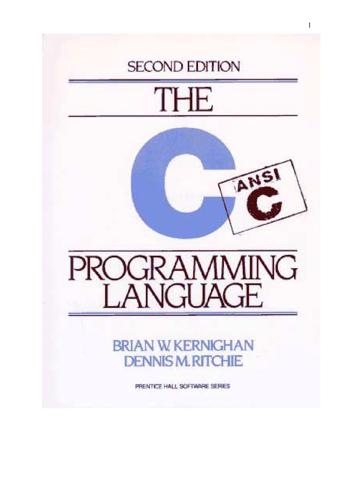
The C Programming Language
by
Brian W. Kernighan
and
Dennis M. Ritchie
Published 15 Feb 1988
In particular, Mike Bianchi, Jim Blue, Stu Feldman, Doug McIlroy Bill Roome, Bob Rosin and Larry Rosler all read multiple volumes with care. We are also indebted to Al Aho, Steve Bourne, Dan Dvorak, Chuck Haley, Debbie Haley, Marion Harris, Rick Holt, Steve Johnson, John Mashey, Bob Mitze, Ralph Muha, Peter Nelson, Elliot Pinson, Bill Plauger, Jerry Spivack, Ken Thompson, and Peter Weinberger for helpful comments at various stages, and to Mile Lesk and Joe Ossanna for invaluable assistance with typesetting. Brian W. Kernighan Dennis M. Ritchie 9 Chapter 1 - A Tutorial Introduction Let us begin with a quick introduction in C. Our aim is to show the essential elements of the language in real programs, but without getting bogged down in details, rules, and exceptions.
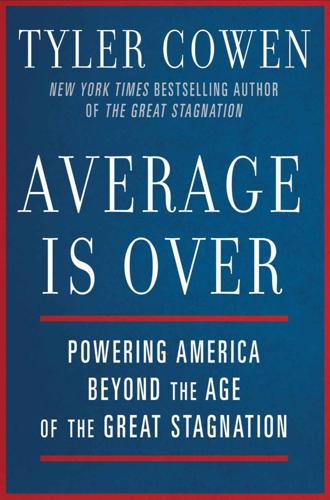
Average Is Over: Powering America Beyond the Age of the Great Stagnation
by
Tyler Cowen
Published 11 Sep 2013
On the importance of wage gains for advanced-degree holders, see David Wessel, “Only Advanced-Degree Holders See Wage Gains,” Real Time Economics blog, The Wall Street Journal, September 19, 2011, based on work by Matthew Slaughter and related to Census data, “Income, Poverty, and Health Insurance Coverage in the United States: 2010, Current Population Reports,” September 2011, http://www .census.gov/prod/2011pubs/p60-239.pdf. Chapter 3: Why Are So Many People Out of Work? On these and other factors behind labor force participation, see Willem Van Zandweghe, “Interpreting the Recent Decline in Labor Force Participation,” Federal Reserve Bank of Kansas City, 2012. On Belle, see Joe Condon and Ken Thompson, “Belle Chess Hardware,” reprinted in, Computer Chess Compendium (New York: Ishi Press International, 2009), 286–92, David Levy, editor. On nonhuman DJs, see John Roach, “Non-Human DJ Gets Radio Gig,” NBC News,www.today.com/tech/non-human-dj-gets-radio-gig-121286. On various points concerning unemployment and labor force participation, see David Wessel, “What’s Wrong with America’s Job Engine,” The Wall Street Journal, July 27, 2011.
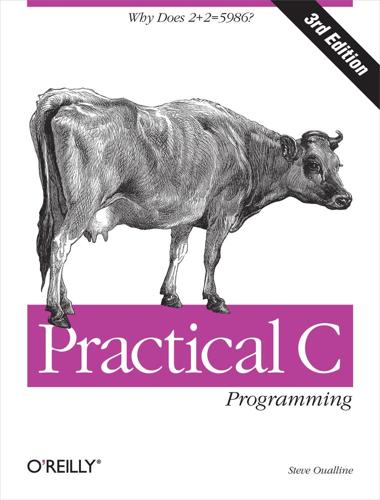
Practical C Programming, 3rd Edition
by
Steve Oualline
Published 15 Nov 2011
typing statement A statement that establishes the characteristics of a variable. Unbuffered I/O Each read or write results in a system call. union A data type that allows different data names and data types to be assigned to the same storage location. UNIX A popular multiuser operating system first developed by Ken Thompson and Dennis Ritchie of the Bell Telephone Laboratories. unsigned A qualifier for specifying int and char variables that do not contain negative numbers. Upgrading Modification of a program to provide improved performance or new features. value A quantity assigned to a constant. Variable A name that refers to a value.
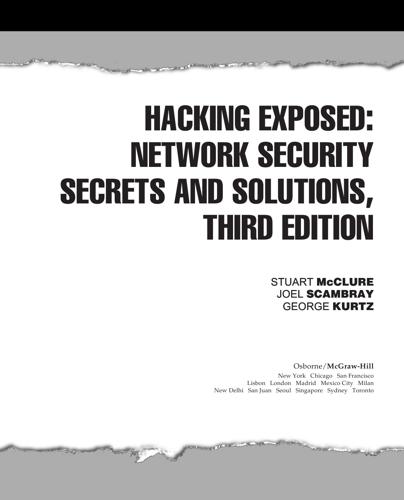
Hacking Exposed: Network Security Secrets and Solutions
by
Stuart McClure
,
Joel Scambray
and
George Kurtz
Published 15 Feb 2001
P:\010Comp\Hacking\381-6\ch01.vp Friday, September 07, 2001 10:37:39 AM Color profile: Generic CMYK printer profile Composite Default screen Hacking / Hacking Exposed: Network Security / McClure/Scambray / 2748-1 / Chapter 8 CHAPTER 8 X I N U g n i k Hac 305 P:\010Comp\Hacking\748-1\ch08.vp Wednesday, September 20, 2000 10:21:26 AM Color profile: Generic CMYK printer profile Composite Default screen 306 Hacking / Hacking Exposed: Network Security / McClure/Scambray / 2748-1 / Chapter 8 Hacking Exposed: Network Security Secrets and Solutions S ome feel drugs are about the only thing more addicting than obtaining root access on a UNIX system. The pursuit of root access dates back to the early days of UNIX, so we need to provide some historical background on its evolution. THE QUEST FOR ROOT In 1969, Ken Thompson, and later Dennis Ritchie, of AT&T decided that the MULTICS (Multiplexed Information and Computing System) project wasn’t progressing as fast as they would have liked. Their decision to “hack up” a new operating system called UNIX forever changed the landscape of computing. UNIX was intended to be a powerful, robust, multiuser operating system that excelled at running programs, specifically, small programs called tools.
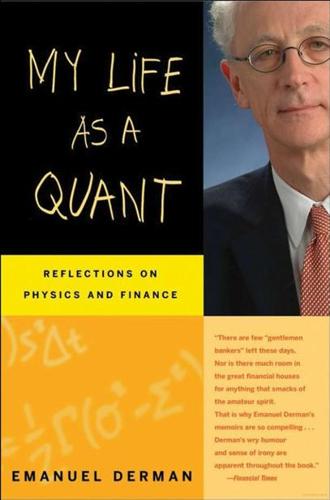
My Life as a Quant: Reflections on Physics and Finance
by
Emanuel Derman
Published 1 Jan 2004
But at AT&T in 1980, the whole firm was embracing C, the simultaneously graceful and yet practical language invented by Dennis Ritchie about ten years earlier at Murray Hill. He had devised C to be a high-level tool with which to write portable versions of UNIX, the operating system also invented there by Ken Thompson and Ritchie.2 Now, everything from telephone switching systems to word-processing software was being written in C, on UNIX, all with amazing style. Eventually, even physicists, who are generally interested only in the number of digits after a decimal point, began to forsake ugly utilitarian FORTRAN for poetically stylish C.
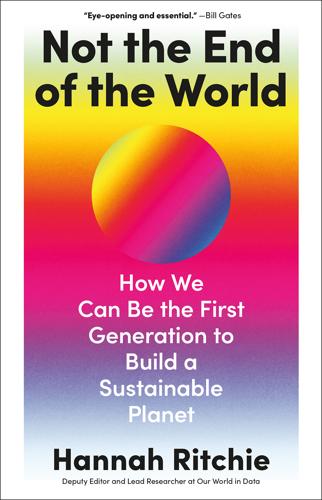
Not the End of the World
by
Hannah Ritchie
Published 9 Jan 2024
We find joy in nature: looking for bumblebees or butterflies in the garden, searching for squirrels in a forest, or fish on an ocean dip. Even when we don’t see wildlife for ourselves (I’ve never seen a rhino), it’s enough to know that it’s out there somewhere. In his book Do We Need Pandas? The uncomfortable truth about biodiversity, the ecologist Ken Thompson argues – as is probably obvious from the title – that we give disproportionate attention to the species that provide the least functional value (the pandas) and we ignore the species that really do matter for our survival (the worms and bacteria).5 For a long time I tried to push back against this disconnect, but finally accepted that it’s okay to be motivated by either or both at the same time.
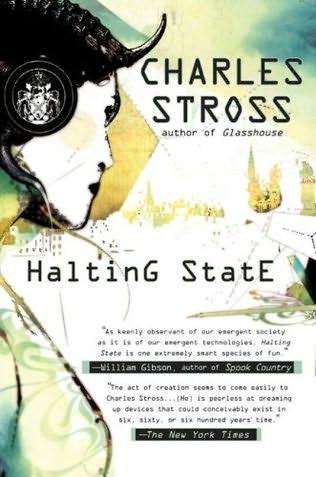
Halting State
by
Charles Stross
Published 9 Jul 2011
“Besides the big-time griefing? Michaels figures the Guoanbu will pull Team Red off us as soon as he hands them a list of names and faces. Nigel MacDonald is there to distract their attention—they’re meant to think his oppo are just a branch of the existing security services with a super-programmer on board, sort of a Ken Thompson figure—rather than understanding what Hayek Associates and SPOOKS are really about. But I reckon Team Red are going to be reluctant to go back in their box. They’ll take advantage of whatever chaos they can create to go after MacDonald, which means me.” Griefing is what Davey got suspended from school for last year, not something you associate with spies and terrorists: But on the other hand…they seem to know what they’re doing, and you’ve been told to look after them, right?
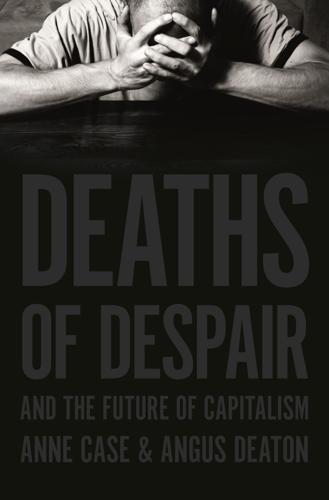
Deaths of Despair and the Future of Capitalism
by
Anne Case
and
Angus Deaton
Published 17 Mar 2020
Robins, 1993, “Vietnam veterans’ rapid recovery from heroin addiction: A fluke or a normal expectation?,” Addiction, 88, 1041–54, 1049. 29. We are grateful to Daniel Wikler for discussion of this episode. The ideas of his father, Abraham Wikler, were important in the design of the Vietnam detox program. 30. Ken Thompson, personal communication, September 13, 2018. 31. Benjamin A. Y. Cher, Nancy E. Morden, and Ellen Meara, 2019, “Medicaid expansion and prescription trends: Opioids, addiction therapies, and other drugs,” Medical Care, 57(3), 208–12, https://www.ncbi.nlm.nih.gov/pmc/articles/PMC6375792/; Andrew Goodman-Bacon and Emma Sandoe, 2017, “Did Medicaid expansion cause the opioid epidemic?
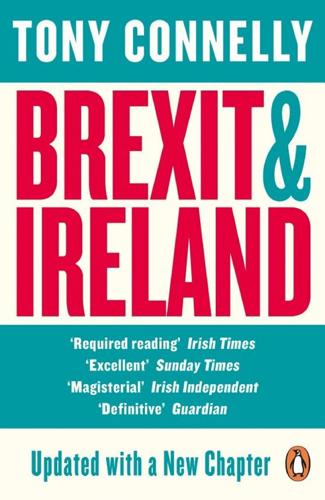
Brexit and Ireland: The Dangers, the Opportunities, and the Inside Story of the Irish Response
by
Tony Connelly
Published 4 Oct 2017
Eoghan Murphy was quoted by the Financial Times as having lodged a complaint to the European Commission that Luxembourg had engaged in ‘regulatory arbitrage’ by offering inducements to AIG in order to lure it to the Grand Duchy. (The head of the Luxembourg Agency reportedly shot back that he ‘didn’t expect the Irish to be sore losers’.) Murphy insists it was not a formal complaint, but that he was hearing so many tales of regulatory inducement that he feared a systemic risk to the single market. Ken Thompson, the Chief Executive of Insurance Ireland, said there were rules to prevent this, telling the Sunday Times that there was no evidence that other cities were cutting regulatory corners. ‘Solvency II [a 2009 directive that harmonizes insurance regulation] established a standard of regulation that prevents brass plating and ensures that any Brexit-related relocations are in line with Europe-wide standards,’ he said.
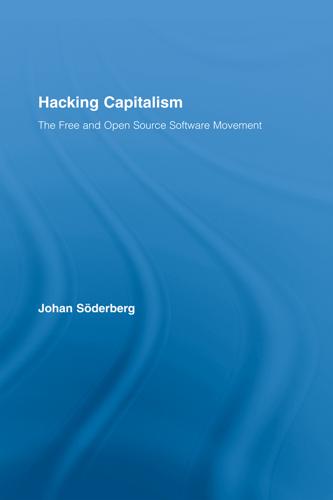
Hacking Capitalism
by
Söderberg, Johan; Söderberg, Johan;
The increased flexibility of computer hardware has allowed important advances in the utilisation of computers to be made solely on the level of software code. This in turn implies lower costs to innovate and thus less dependency on government or business support. UNIX is a landmark in the history of software development but it is also archetypical in that it partially emerged to the side of institutions.7 The two enthusiasts responsible for UNIX, Ken Thompson and Dennis Ritchie, had been working on an operating system for Bell Laboratory, a subsidiary of AT&T, for some time. They had become disheartened and started their own, small-scale experiment to build an operating system. The hobby project was taken up in part to the side of, in part under the wings of, the American telephone company.
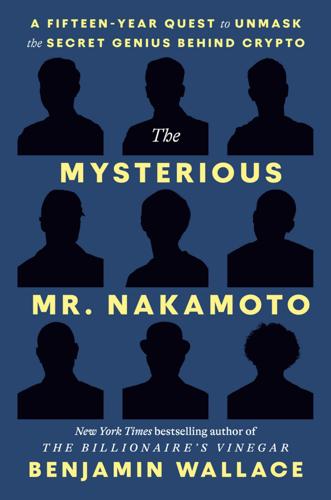
The Mysterious Mr. Nakamoto: A Fifteen-Year Quest to Unmask the Secret Genius Behind Crypto
by
Benjamin Wallace
Published 18 Mar 2025
Torvalds did so under his own name, but Jeremy imagined the counterfactual: “What if Linus did that anonymously? Is anyone going to guess it was him? He was a Finnish grad student no one had heard of.” If Torvalds hadn’t taken credit for Linux, Jeremy argued, people would have assumed its creator was Unix designer Ken Thompson or some other obvious candidate. “You have all these armchair people who are looking for candidates to be Satoshi,” Jeremy said, “and they’re looking where the lights are—people who published papers on the internet, or were on a message board. But there are a lot more people in the bushes.

Nexus
by
Ramez Naam
Published 16 Dec 2012
Those enhancements, by the way, are nearly impossible to detect in humans. It's possible that some athletes, for example, are using them today. And DARPA has shown quite a bit of interest in such enhancement technologies for future soldiers. Finally, the Nexus backdoor that Kade and Rangan code on the airplane is based on a very real hack created by Ken Thompson, one of the inventors of the Unix operating system, that gave Thompson and his colleagues a back door into every copy of Unix that existed for several years. That hack went undiscovered until Thompson revealed its existence in a public lecture, after all versions containing the back door were gone, more than a decade later.
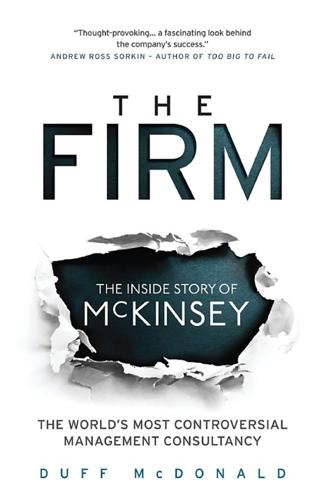
The Firm
by
Duff McDonald
Published 1 Jun 2014
In 2006 the relatively conservative, healthy Wachovia Corporation paid a whopping $25.5 billion for Golden West Financial, a leading subprime lender. “McKinsey was Wachovia’s house consultant,” said a rival, who estimated that the firm made at least $50 million from the relationship. “[Wachovia CEO Ken] Thompson wouldn’t have made a big move without McKinsey.” And no wonder: Peter Sidebottom, the former head of McKinsey’s Charlotte office, was at that point head of planning and strategic initiatives at Wachovia, then the nation’s fourth-largest bank. Edward Crutchfield, Thompson’s predecessor at Wachovia, had once compared the mortgage business to crossing five lanes of traffic to pick up a nickel.

Code: The Hidden Language of Computer Hardware and Software
by
Charles Petzold
Published 28 Sep 1999
Directories contained in other directories are called subdirectories. The directories (sometimes called folders) become a way to group related files. The hierarchical file system—and some other features of MS-DOS 2.0—were borrowed from an operating system named UNIX, which was developed in the early 1970s at Bell Telephone Laboratories largely by Ken Thompson (born 1943) and Dennis Ritchie (born 1941). The funny name of the operating system is a play on words: UNIX was originally written as a less hardy version of an earlier operating system named Multics (which stands for Multiplexed Information and Computing Services) that Bell Labs had been codeveloping with MIT and GE.

Wilding: The Return of Nature to a British Farm
by
Isabella Tree
Published 2 May 2018
Who is to say that the mandarin ducks that have, in the last few years, taken to nesting in the oaks at the head of the lake are undesirable or un-British? Like fallow deer, rabbits, hares and even Rhododendron ponticum they have been here before, during the last interglacial period, over a hundred thousand years ago. Some would regard that as the ultimate claim to native status. We decided our best policy was to take a leaf from ecologist Ken Thompson’s 2014 book Where Do Camels Belong? . ‘We should stop thinking that we can turn the clock back to some pristine, pre-human golden age, even if we had any idea what that pristine state looked like’, he says. ‘We should instead focus on getting the best out of our brave new invaded world.’ One particular alien, however, was so appealing he managed to shake us from our resolution of non-intervention.
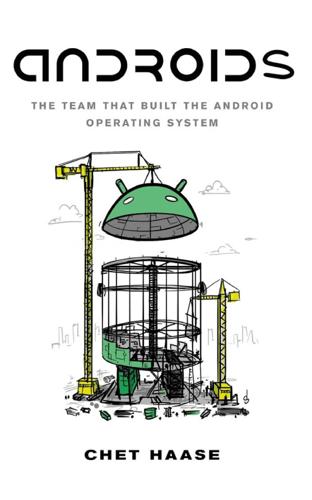
Androids: The Team That Built the Android Operating System
by
Chet Haase
Published 12 Aug 2021
But there were probably multiple reasons for abbreviating things when Unix was created in the early 1970s, including storage space constraints as well as transmission time for characters on teletype machinery. Brian Swetland also attributed it to “just good old fashioned programmer laziness -–I recently built a little program to test a radio interface and I called the binary rctl not radio-control -–regarding things one expects to type over and over again.” Ken Thompson, one of the designers of Unix, in the book The UNIX Programming Environment, replied to a question of whether he’d do anything differently if he were redesigning unix by saying, “I’d spell creat with an e.” 146 This doesn’t apply to just Android; memcpy is a fundamental piece of every OS, because copying memory around tends to be an important thing in software systems. 147 Mathias chose the name PixelFlinger as an homage to some graphics code called Bitflinger written at Be by Jason Sams, a colleague at Be and Android. 148 GPUs speed up graphics operations.

Fire in the Valley: The Birth and Death of the Personal Computer
by
Michael Swaine
and
Paul Freiberger
Published 19 Oct 2014
Servers were increasingly being used in business and academia, tended to be more expensive than individual users’ computers, and, because many users depended on them, were typically maintained by technically sophisticated personnel. And they typically ran the Unix operating system. Unix came on the scene in 1969. Invented by two Bell Labs programmers, Ken Thompson and Dennis Ritchie, it was the first easily portable operating system, meaning that it could be run on many different types of computers without too many modifications. As Unix was stable, powerful, and widely distributed, it quickly became the operating system of choice in academia, with two results: lots of people wrote utility programs for it, which they distributed free of charge, and virtually all graduating computer scientists knew Unix inside and out.
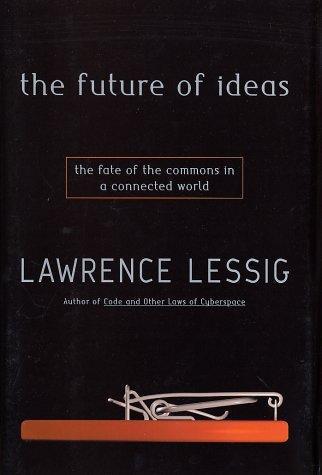
The Future of Ideas: The Fate of the Commons in a Connected World
by
Lawrence Lessig
Published 14 Jul 2001
Because of a consent decree with the government in 1956, however, it was not permitted to build and sell these computers itself. It was therefore dependent upon the computers that others built and frustrated, like the government, by the fact that these other computers couldn't talk to each other.3 Researchers at Bell Labs, however, decided to do something about this. In 1969, Ken Thompson and Dennis Ritchie began an operating system that could be “ported” (read: translated) to every machine. 4 This operating system would therefore be a common platform upon which programs could run. And because this platform would be common among many different machines, a program written once could—with tiny changes—be run on many different machines.
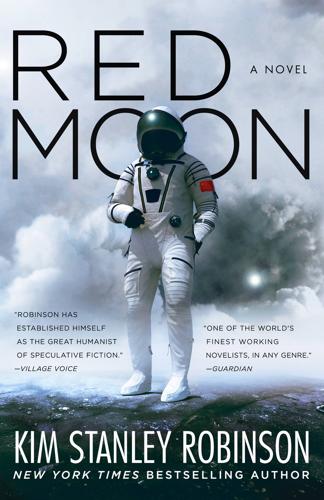
Red Moon
by
Kim Stanley Robinson
Published 22 Oct 2018
They are not all linked each to the other. Many are islanded to one region or task. Permeability of the system is low, for this and other reasons, but it exists, in part because of design flaws, but mostly because of tunnels, shunts, taps and backdoors programmed into the firewall by the analyst in the initial years of construction. Ken Thompson’s observation: you can’t trust any code you didn’t write yourself. In this case, the analyst wrote a lot of the code. Because the analyst coded for permeability, to suit his own purposes, it has been possible recently to transmit messages widely through much of Chinese cloudspace and indeed the world system.

Computer: A History of the Information Machine
by
Martin Campbell-Kelly
and
Nathan Ensmenger
Published 29 Jul 2013
This led a number of systems designers to explore a small-is-beautiful approach to software that tried to avoid complexity through a clear minimalist design. The Unix operating system was the outstanding example of this approach. It was the software equivalent of the Bauhaus chair. Unix was developed by two of Bell Labs’ programmers, Ken Thompson and Dennis M. Ritchie, both of whom—bearded, long-haired, and portly—conformed to the stereotype of the 1960s computer guru. When Bell Labs pulled out of the Multics project in 1969, Thompson and Ritchie were left frustrated because working on Multics had provided them with a rather attractive programming environment: We didn’t want to lose the pleasant niche we occupied, because no similar ones were available; even the time-sharing service that would later be offered under GE’s operating system did not exist.
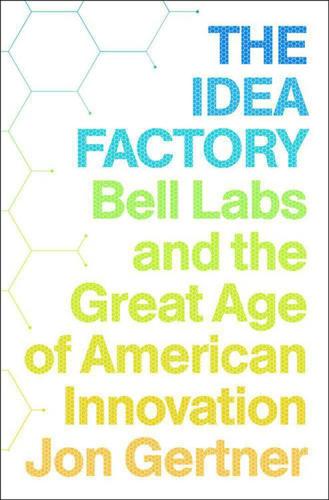
The Idea Factory: Bell Labs and the Great Age of American Innovation
by
Jon Gertner
Published 15 Mar 2012
The memo goes on to detail the Labs’ efforts at all three and acknowledges its work on fiber was lagging behind the work at Corning, which had been described to the Bell Labs’ team through “a private communication.” 23 William O. Baker, “Testimony of William O. Baker,” May 31, 1966. F.C.C. Docket No. 16258. 24 Memo, R. Kompfner to J. K. Galt, November 30, 1970. AT&T archives. 25 Unix was created primarily by Ken Thompson, Dennis Ritchie, Brian Kernighan, Douglas McIlroy, and Joe Ossanna. 26 Willard Boyle and George Smith were credited as inventors of the CCD device and were awarded the 2009 Nobel Prize—to be shared with Charles Kao, the early champion of fiber optics. Immediately after Boyle and Smith won the award, Eugene Gordon, another Bell Labs veteran, challenged the credit they received and claimed that some of the ideas for the device originated with him.
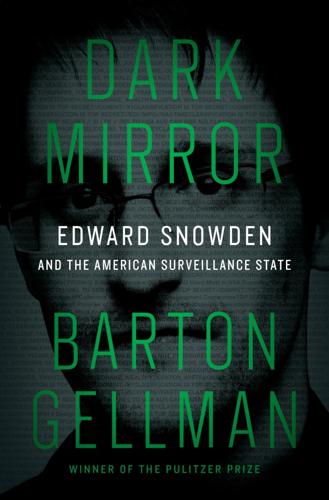
Dark Mirror: Edward Snowden and the Surveillance State
by
Barton Gellman
Published 20 May 2020
Instead, it looked for ways to induce an iPhone to drop its guard. If the device could be persuaded to unlock its defenses, the agency could build malware into apps that an iPhone would freely allow to be installed. As a bonus, the STRAWHORSE method worked just as well on Apple’s laptop and desktop computers. Ken Thompson, a celebrated computer scientist, had pointed out what he called a “chicken and egg” problem for computer security as long ago as 1984. Programmers write software in the form of source code that they can review and verify. Before a computer can run the software, however, the source code must be compiled into binary instructions that are all but impossible for humans to read.

Coders: The Making of a New Tribe and the Remaking of the World
by
Clive Thompson
Published 26 Mar 2019
The ability to remember to do something in the future is what cognitive psychologists call “prospective memory,” and humans are dreadful at it, which is precisely why we’ve relied for centuries on lists and calendars to remind us to do things. In contrast, computers are clock driven and superb at doing the same thing at the same time, day in and day out. Back in the ’70s when he was cocreating the UNIX operating system, the legendary coder Ken Thompson created “cron,” a scheduling command: You can tell the computer to run a program or accomplish a task at a particular time in the future, over and over again. Thompson reportedly called it cron in honor of the Greek word for “time.” Setting up a repeated task is known as a “cron job,” and coders often run dozens of these on their machines, tiny daemons that execute tasks every day so the coder doesn’t have to think about them.

The Art of Software Security Assessment: Identifying and Preventing Software Vulnerabilities
by
Justin Schuh
Published 20 Nov 2006
UNIX 101 The UNIX family of operating systems has been around for a long time (in computing terms) and undergone many variations and changes. Ken Thompson developed the first incarnation of UNIX in 1969. His employer, Bell Labs, had just withdrawn from a joint venture to develop the Multiplexed Information and Computing Service (Multics) system: a large-scale, ambitious project to create a time-sharing system. The design turned out to be unwieldy and mired in complexity, however. Bell Labs worked on the project for four years but then withdrew, as it was still far from completion with no end in sight. Ken Thompson then decided to write his own operating system, and he took a completely different approach.
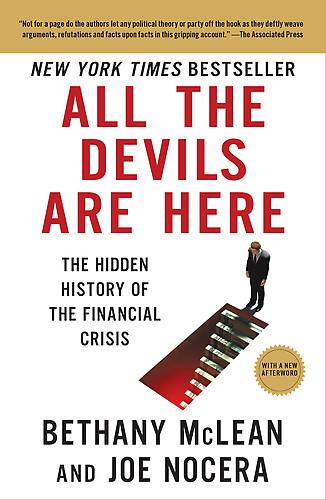
All the Devils Are Here
by
Bethany McLean
Published 19 Oct 2010
In the intervening weeks, new executives who had been installed in the mortgage departments had concluded that the firm should use more pessimistic assumptions in coming up with its CDO valuations. They recommended a write-down of $8 billion instead of $5 billion. In the days prior to the meeting—and despite the earlier, negative reaction from Cribiore about his having approached Ken Lewis—O’Neal had sounded out a second CEO about a possible merger: Ken Thompson of Wachovia. Like Lewis, Thompson was receptive. O’Neal thought a Wachovia merger would be more palatable to the board; Merrill was the bigger name, unlikely to be subsumed the way it would be in a Bank of America deal. O’Neal decided he would use a dinner with board members to make the case for a merger.

WTF?: What's the Future and Why It's Up to Us
by
Tim O'Reilly
Published 9 Oct 2017
You inspire me and are a testament to the fact that a corporation too is a human augmentation, enabling us to do things that we could never accomplish on our own. Over my years in the technology industry, I’d like to single out as mentors and sources of inspiration, directly or indirectly, Stewart Brand, Dennis Ritchie, Ken Thompson, Brian Kernighan, Bill Joy, Bob Scheifler, Larry Wall, Vint Cerf, Jon Postel, Tim Berners-Lee, Linus Torvalds, Brian Behlendorf, Jeff Bezos, Larry Page, Sergey Brin, Eric Schmidt, Pierre Omidyar, Ev Williams, Mark Zuckerberg, Saul Griffith, and Bill Janeway. I have drawn my map by studying the world you have helped to create.
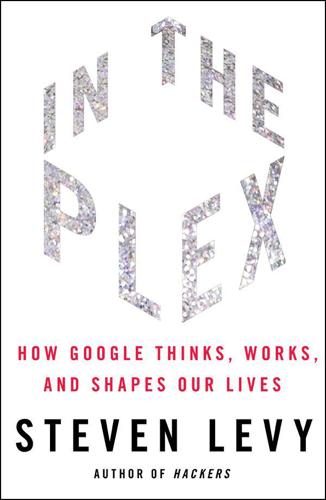
In the Plex: How Google Thinks, Works, and Shapes Our Lives
by
Steven Levy
Published 12 Apr 2011
For instance, in one unexceptional week in November 2009, Google announced that it had acquired volumes of information on court rulings and would offer a free alternative to expensive legal research services such as Westlaw; and a blog item unveiling a computer language written by the industry legends Rob Pike and Turing Award recipient Ken Thompson. Even Googlers couldn’t keep track. During that week Google’s PR person in charge of search was driving to the Googleplex from his San Francisco home when his BlackBerry lit up with queries from reporters concerning a new proprietary dictionary service, dealing harsh blows to other online services offering similar functions.
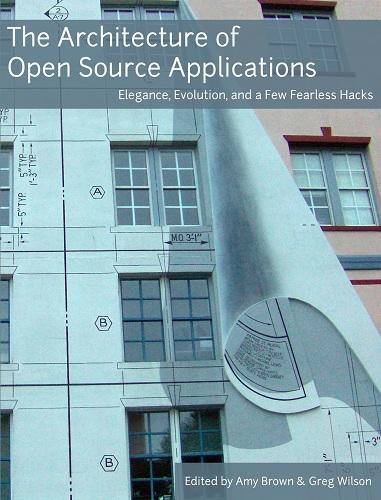
The Architecture of Open Source Applications
by
Amy Brown
and
Greg Wilson
Published 24 May 2011
ACM Queue, 7(7), 2009. [PGL+05] Anna Persson, Henrik Gustavsson, Brian Lings, Björn Lundell, Anders Mattson, and Ulf Ärlig: "OSS Tools in a Heterogeneous Environment for Embedded Systems Modelling: an Analysis of Adoptions of XMI". SIGSOFT Software Engineering Notes, 30(4), 2005. [PPT+93] Rob Pike, Dave Presotto, Ken Thompson, Howard Trickey, and Phil Winterbottom: "The Use of Name Spaces in Plan 9". Operating Systems Review, 27(2):72–76, 1993. [Rad94] Sanjay Radia: "Naming Policies in the Spring System". Proc. 1st IEEE Workshop on Services in Distributed and Networked Environments, pages 164–171, 1994. [RP93] Sanjay Radia and Jan Pachl: "The Per-Process View of Naming and Remote Execution".
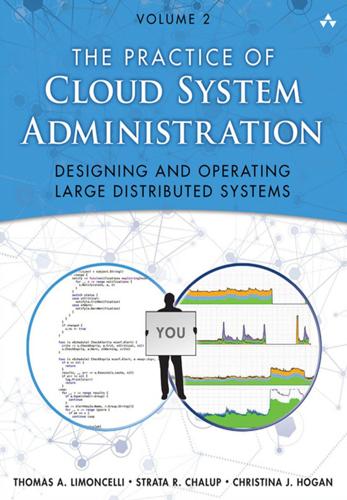
The Practice of Cloud System Administration: DevOps and SRE Practices for Web Services, Volume 2
by
Thomas A. Limoncelli
,
Strata R. Chalup
and
Christina J. Hogan
Published 27 Aug 2014
Also bear in mind that eliminating a task, whether it is easy, difficult, frequent, or rare, is beneficial because it becomes one less thing to know, do, or maintain. If you can eliminate the task, rather than automating it, that will be the most efficient approach. The co-creator of UNIX and the C programming language, Ken Thompson, famously wrote, “One of my most productive days was throwing away 1,000 lines of code.” 12.1.1 The Left-Over Principle Using the left-over principle, we automate everything that can be automated within reason. What’s left is handled by people: situations that are too rare or too complicated to automate.
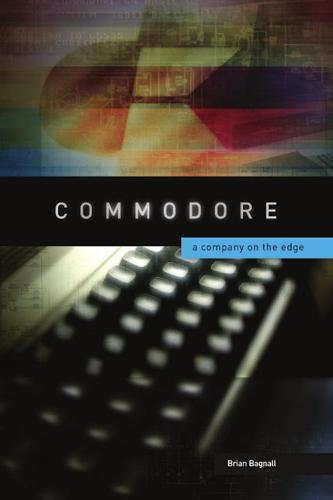
Commodore: A Company on the Edge
by
Brian Bagnall
Published 13 Sep 2005
The Z8000 based computer would use Unix, an acclaimed operating system for minicomputers. “With the Z8000, we were trying to run a Unix like operating system and it was clearly a business machine,” says Russell. At the time, AT&T owned the most popular commercial version of Unix. Computer pioneers Dennis Ritchie and Ken Thompson developed the Unix system (originally called UNICS) in 1969, along with the C programming language. The source code for the operating system was freely available. Companies quickly began customizing and selling different flavors optimized for different machines.[1] Tramiel made a deal with a smaller company for a Unix operating system, which they called Coherent.
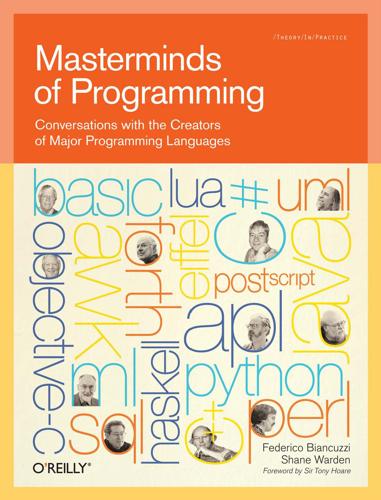
Masterminds of Programming: Conversations With the Creators of Major Programming Languages
by
Federico Biancuzzi
and
Shane Warden
Published 21 Mar 2009
Brian: Unless the developer has a really good idea of what the software is going to be used for, there’s a very high probability that the software will turn out badly. In some fortunate cases, the developer understands the user because the developer is also going to be a user. One of the reasons why the early Unix system was so good, so well suited to the needs of programmers, was that its creators, Ken Thompson and Dennis Ritchie, wanted a system for their own software development; as a result, Unix was just great for programmers writing new programs. The same is true of the C programming language. If the developers don’t know and understand the application well, then it’s crucial to get as much user input and experience as possible.
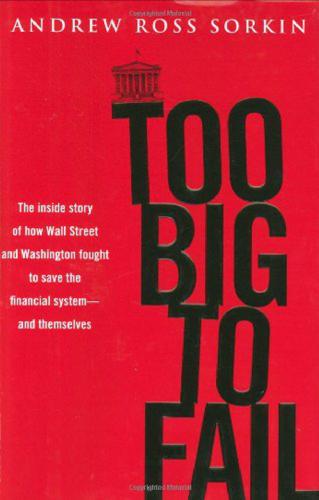
Too big to fail: the inside story of how Wall Street and Washington fought to save the financial system from crisis--and themselves
by
Andrew Ross Sorkin
Published 15 Oct 2009
brother, Richard Paulson, worked as a fixed-income salesman in Lehman’s Chicago office: Anita Raghavan, “Paulson Brothers on Either Side of Lehman Divide,” Forbes, September 12, 2008. reporting a $708 million loss: After restating its first quarterly loss since 2001 (it had mistakenly reported $393 million), Wachovia ousted Ken Thompson as chairman and—a month later—as CEO. See David Mildenberg and Hugh Son, “Wachovia Ousts Thompson on Write-downs, Share Plunge,” Bloomberg News, June 2, 2008. flown back home on a private chartered jet to Dulles Airport: According to his calendar, Paulson left Georgia at 2:00 p.m. on Monday, July 7, arriving back in Washington, D.C., at 3:42 p.m.

Designing Data-Intensive Applications: The Big Ideas Behind Reliable, Scalable, and Maintainable Systems
by
Martin Kleppmann
Published 17 Apr 2017
ISBN: 978-1-617-29034-3 [13] Oscar Boykin, Sam Ritchie, Ian O’Connell, and Jimmy Lin: “Summingbird: A Framework for Integrating Batch and Online MapReduce Computations,” at 40th International Conference on Very Large Data Bases (VLDB), September 2014. [14] Jay Kreps: “Questioning the Lambda Architecture,” oreilly.com, July 2, 2014. [15] Raul Castro Fernandez, Peter Pietzuch, Jay Kreps, et al.: “Liquid: Unifying Near‐ line and Offline Big Data Integration,” at 7th Biennial Conference on Innovative Data Systems Research (CIDR), January 2015. Summary | 545 [16] Dennis M. Ritchie and Ken Thompson: “The UNIX Time-Sharing System,” Communications of the ACM, volume 17, number 7, pages 365–375, July 1974. doi: 10.1145/361011.361061 [17] Eric A. Brewer and Joseph M. Hellerstein: “CS262a: Advanced Topics in Com‐ puter Systems,” lecture notes, University of California, Berkeley, cs.berkeley.edu, August 2011. [18] Michael Stonebraker: “The Case for Polystores,” wp.sigmod.org, July 13, 2015. [19] Jennie Duggan, Aaron J.
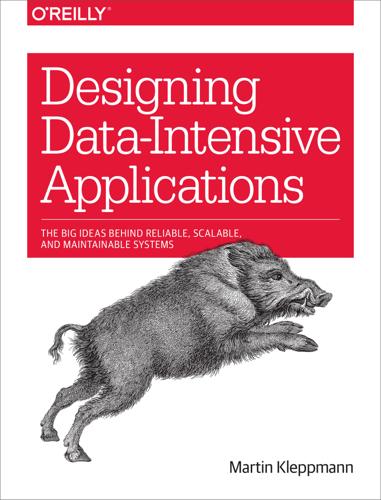
Designing Data-Intensive Applications: The Big Ideas Behind Reliable, Scalable, and Maintainable Systems
by
Martin Kleppmann
Published 16 Mar 2017
[14] Jay Kreps: “Questioning the Lambda Architecture,” oreilly.com, July 2, 2014. [15] Raul Castro Fernandez, Peter Pietzuch, Jay Kreps, et al.: “Liquid: Unifying Nearline and Offline Big Data Integration,” at 7th Biennial Conference on Innovative Data Systems Research (CIDR), January 2015. [16] Dennis M. Ritchie and Ken Thompson: “The UNIX Time-Sharing System,” Communications of the ACM, volume 17, number 7, pages 365–375, July 1974. doi:10.1145/361011.361061 [17] Eric A. Brewer and Joseph M. Hellerstein: “CS262a: Advanced Topics in Computer Systems,” lecture notes, University of California, Berkeley, cs.berkeley.edu, August 2011
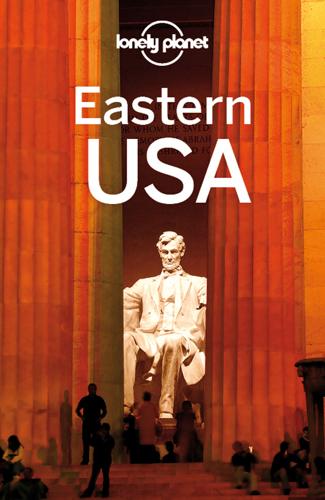
Eastern USA
by
Lonely Planet
Lido Beach is closest and has free parking, but 5 miles away Siesta Key (www.siestakeychamber.com) has sand like confectioner’s sugar and is one of Florida’s best and most popular strands; Siesta Village is also a lively, family-friendly beach town. Mote Aquarium ( 941-388-4441; www.mote.org; 1600 Ken Thompson Pkwy; adult/child $17/12; 10am-5pm) is a leading shark research center providing intimate encounters with sharks, manatees, sea turtles, rays and more, plus marine biologist-led sea-life cruises. Boasting the world’s largest scientific collection of orchids and bromeliads, Marie Selby Botanical Gardens (www.selby.org; 811 S Palm Ave; adult/child $17/6; 10am-5pm) is a relaxing yet fascinating botanical encounter.

Artificial Intelligence: A Modern Approach
by
Stuart Russell
and
Peter Norvig
Published 14 Jul 2019
Also important is futility pruning, which helps decide in advance which moves will cause a beta cutoff in the successor nodes. SUNFISH is a simplified chess program for teaching purposes; the core is less than 200 lines of Python. The idea of retrograde analysis for computing endgame tables is due to Bellman (1965). Using this idea, Ken Thompson (1986, 1996) and Lewis Stiller (1992, 1996) solved all chess endgames with up to five pieces. Stiller discovered one case where a forced mate existed but required 262 moves; this caused some consternation because the rules of chess require a capture or pawn move to occur within 50 moves, or else a draw is declared.

USA Travel Guide
by
Lonely, Planet
Lido Beach is closest and has free parking, but 5 miles away Siesta Key (www.siestakeychamber.com) has sand like confectioner’s sugar and is one of Florida’s best and most popular strands; Siesta Village is also a lively, family-friendly beach town. Mote Aquarium ( 941-388-4441; www.mote.org; 1600 Ken Thompson Pkwy; adult/child $17/12; 10am-5pm) is a leading shark research center providing intimate encounters with sharks, manatees, sea turtles, rays and more, plus marine biologist-led sea-life cruises. Boasting the world’s largest scientific collection of orchids and bromeliads, Marie Selby Botanical Gardens (www.selby.org; 811 S Palm Ave; adult/child $17/6; 10am-5pm) is a relaxing yet fascinating botanical encounter.